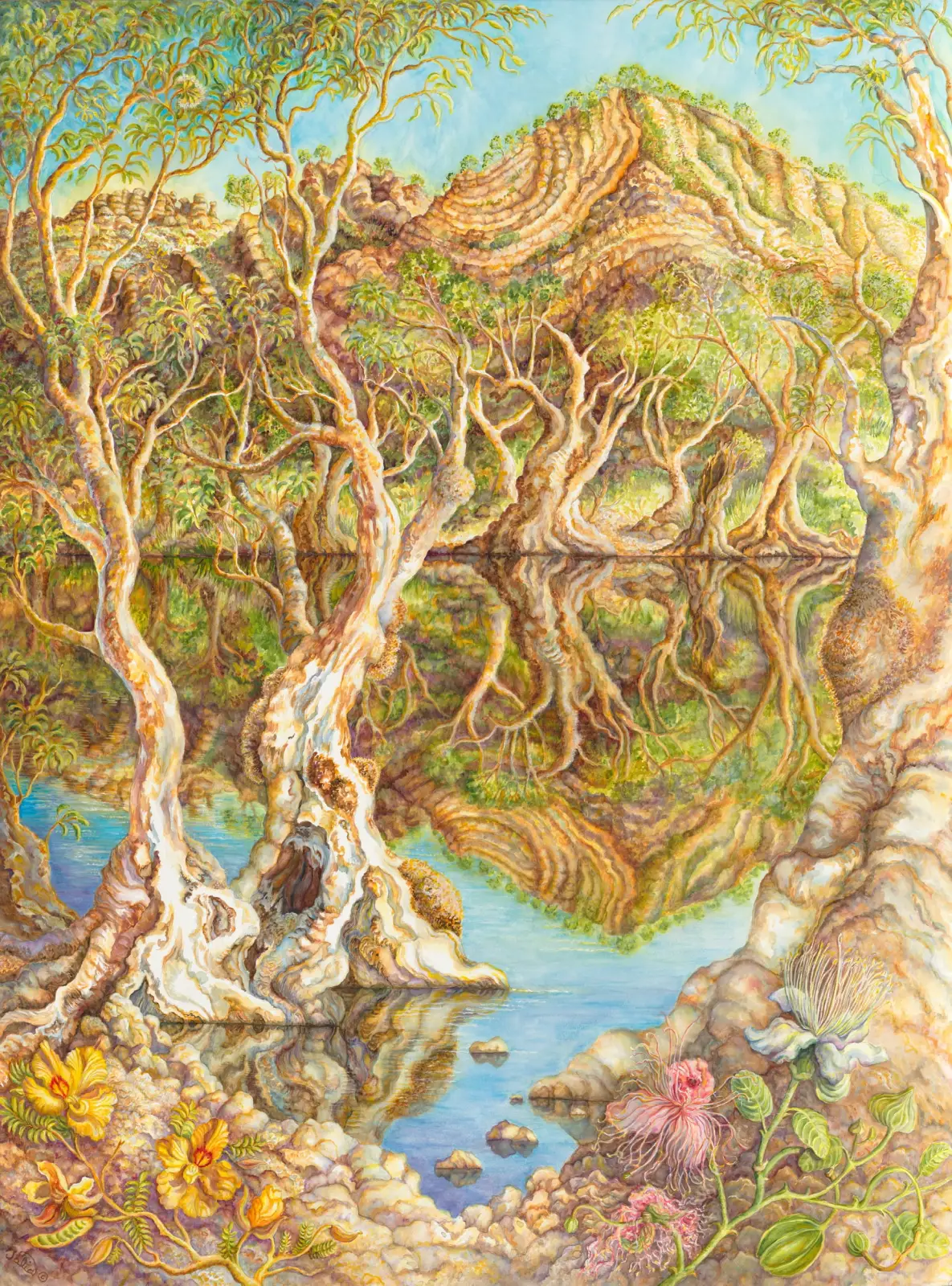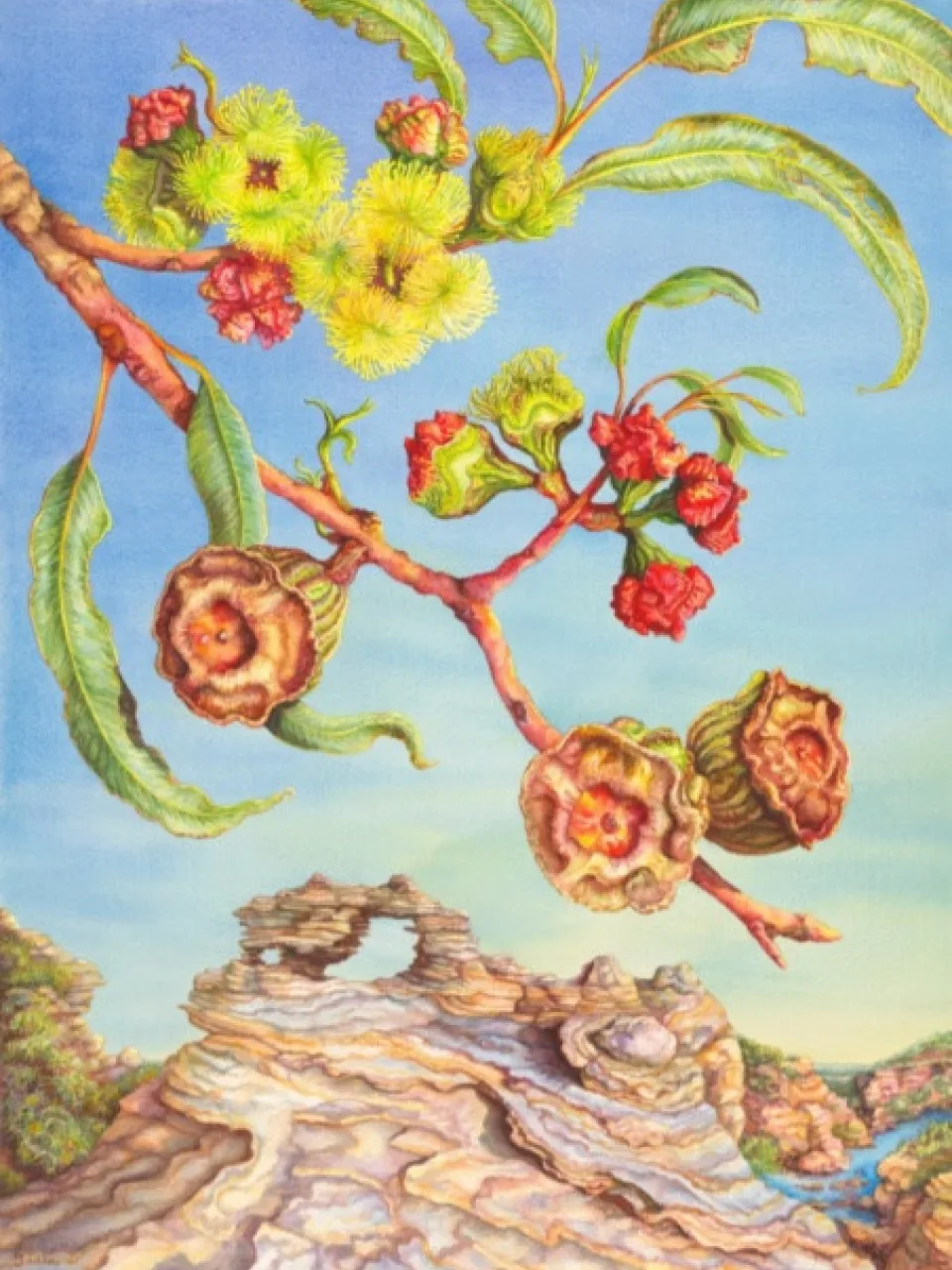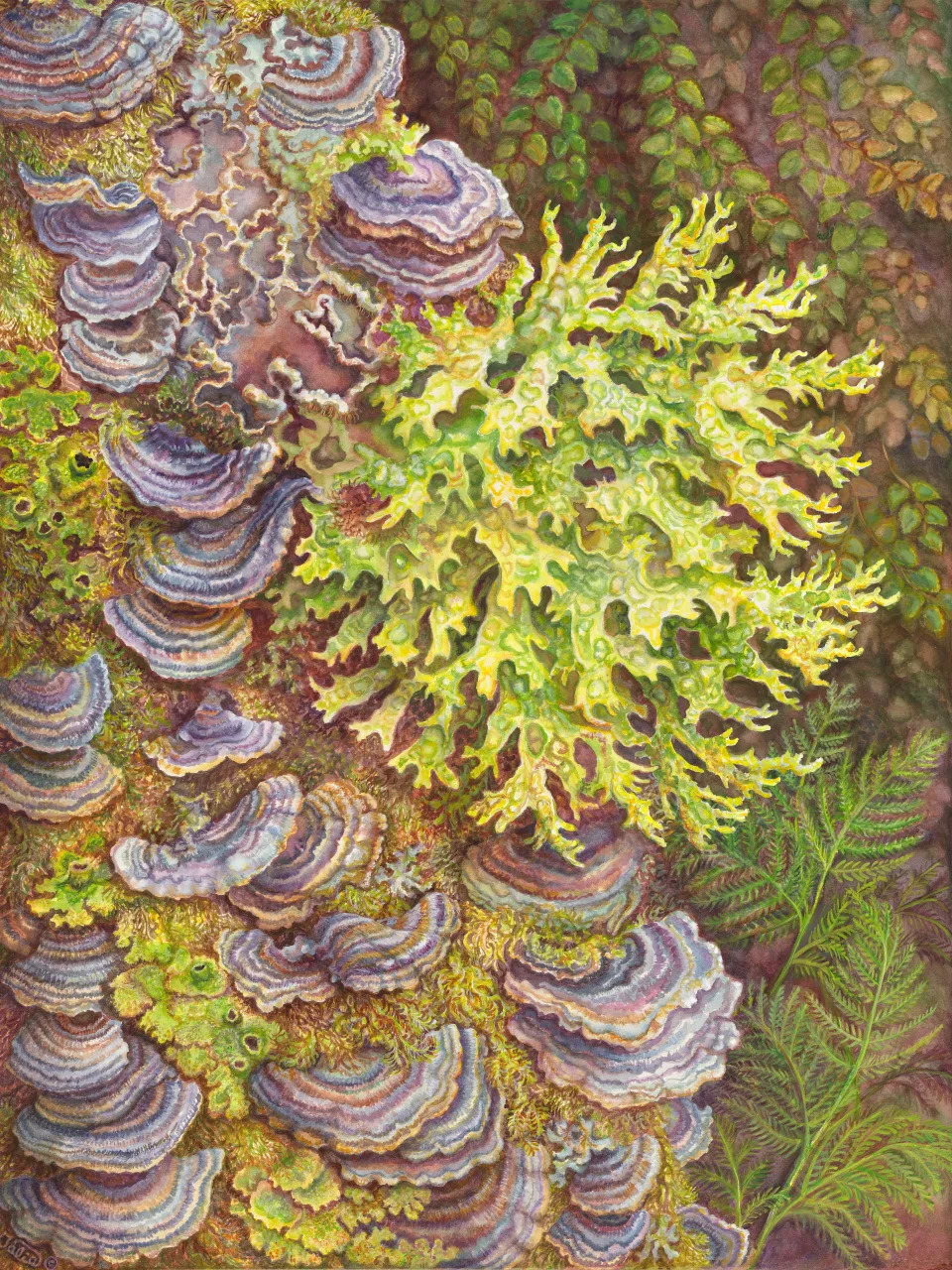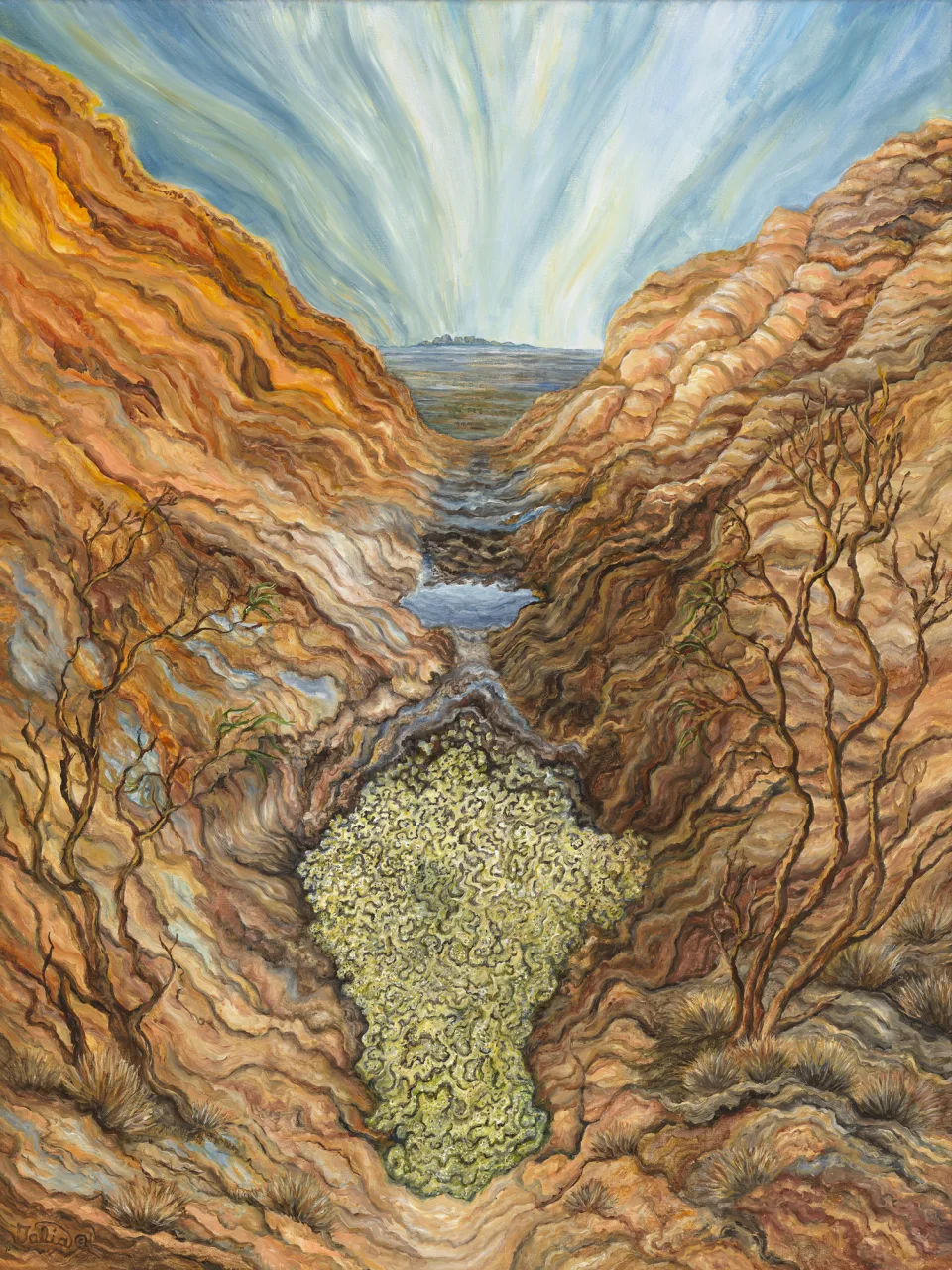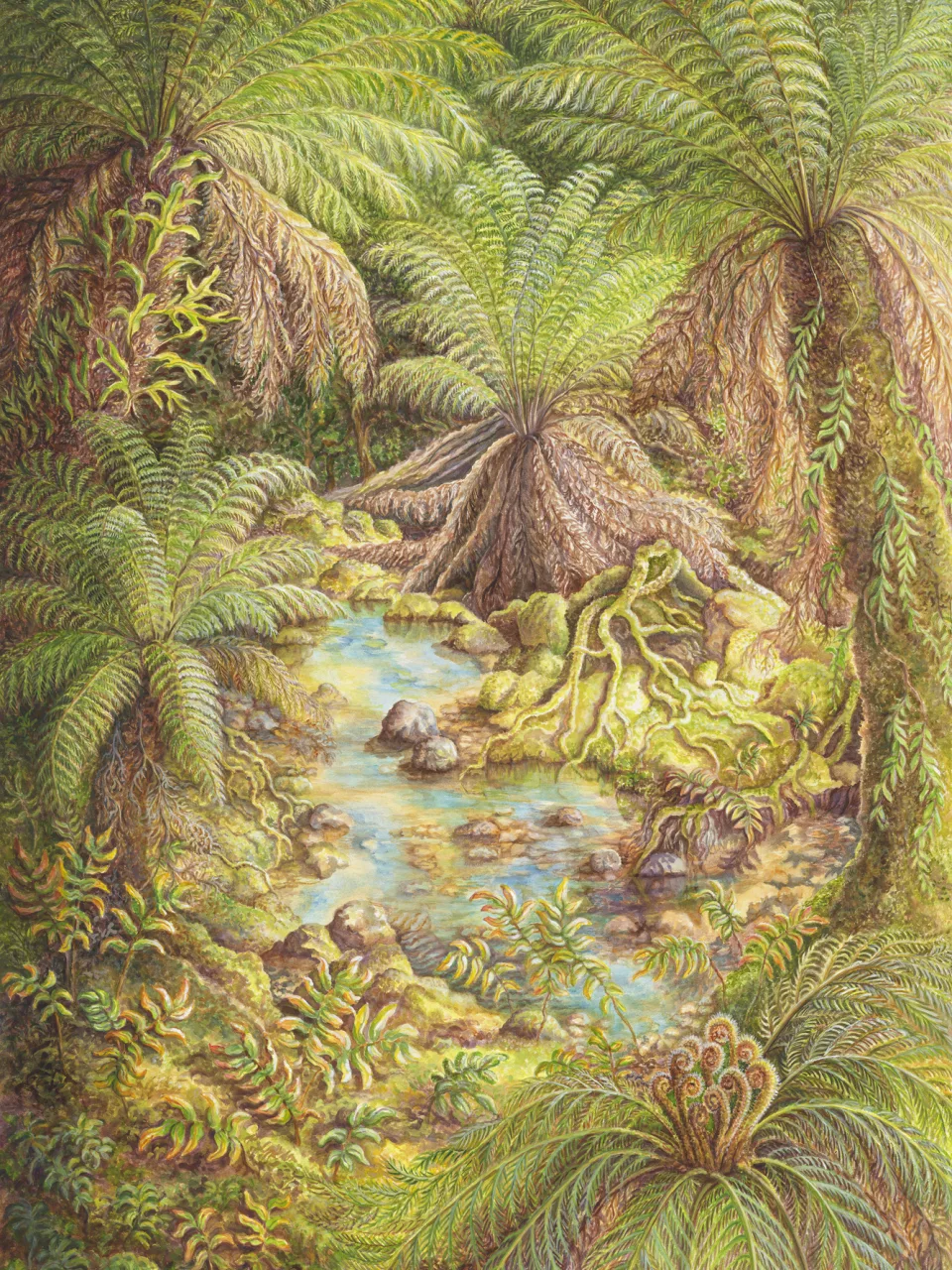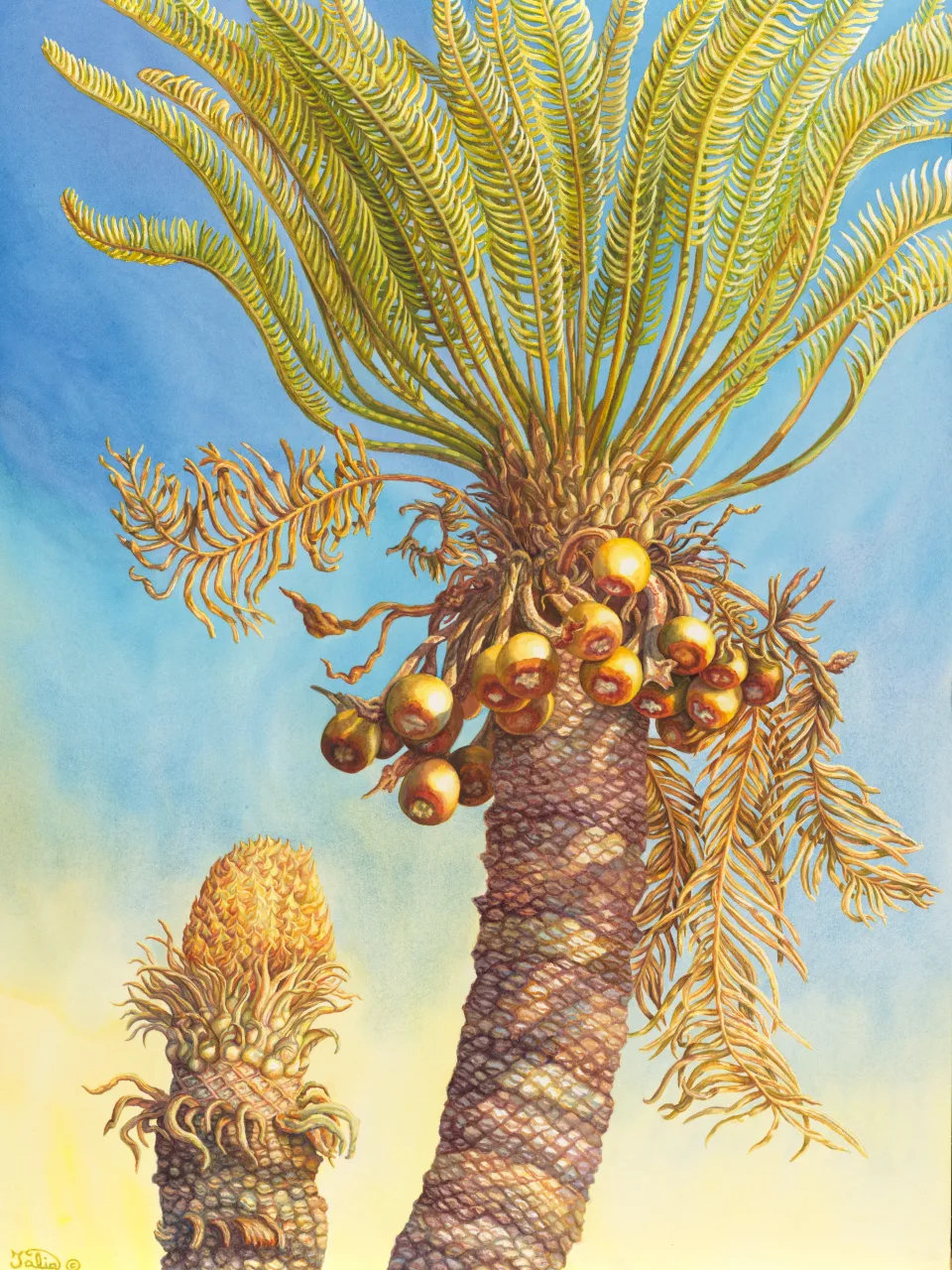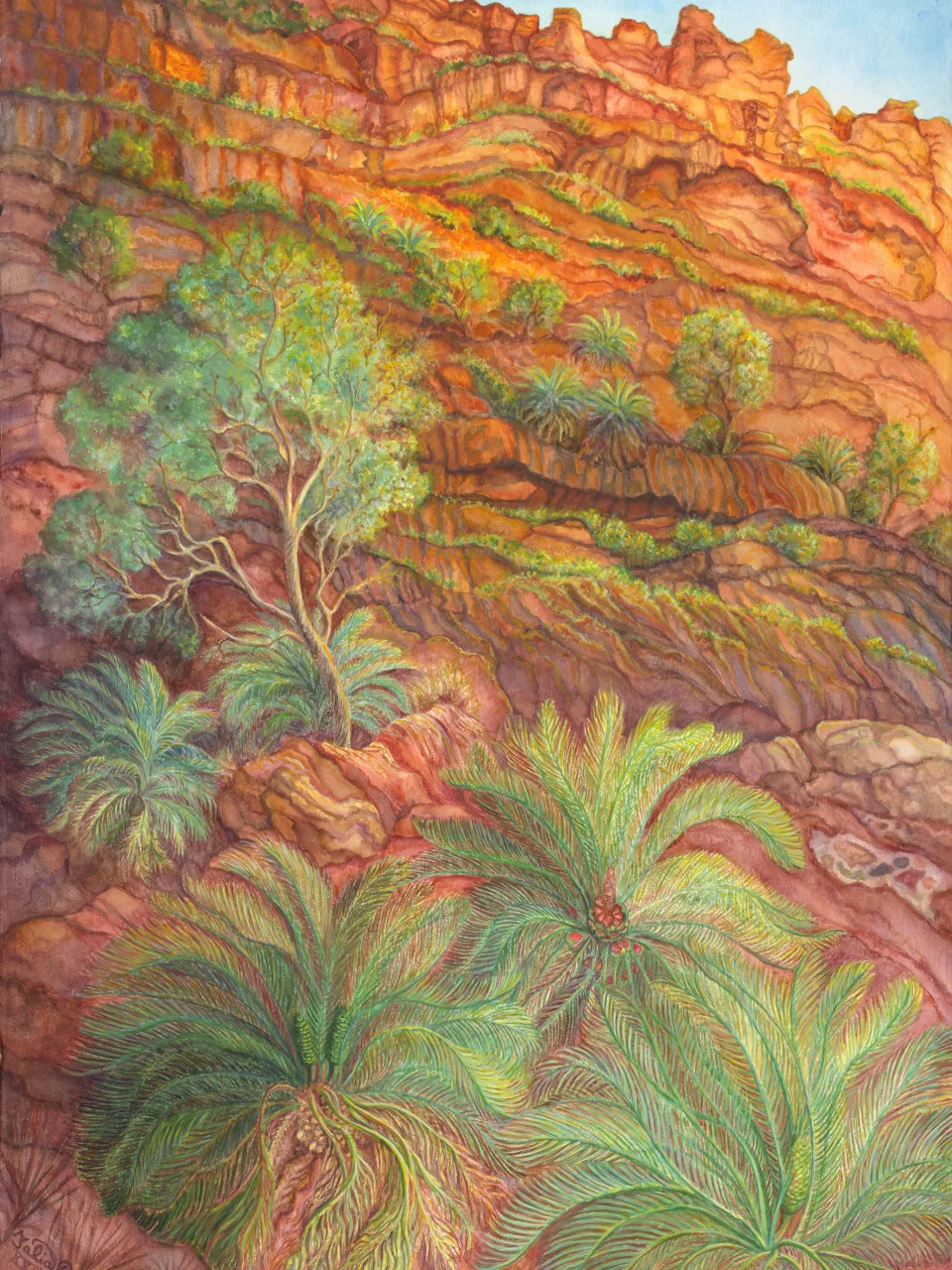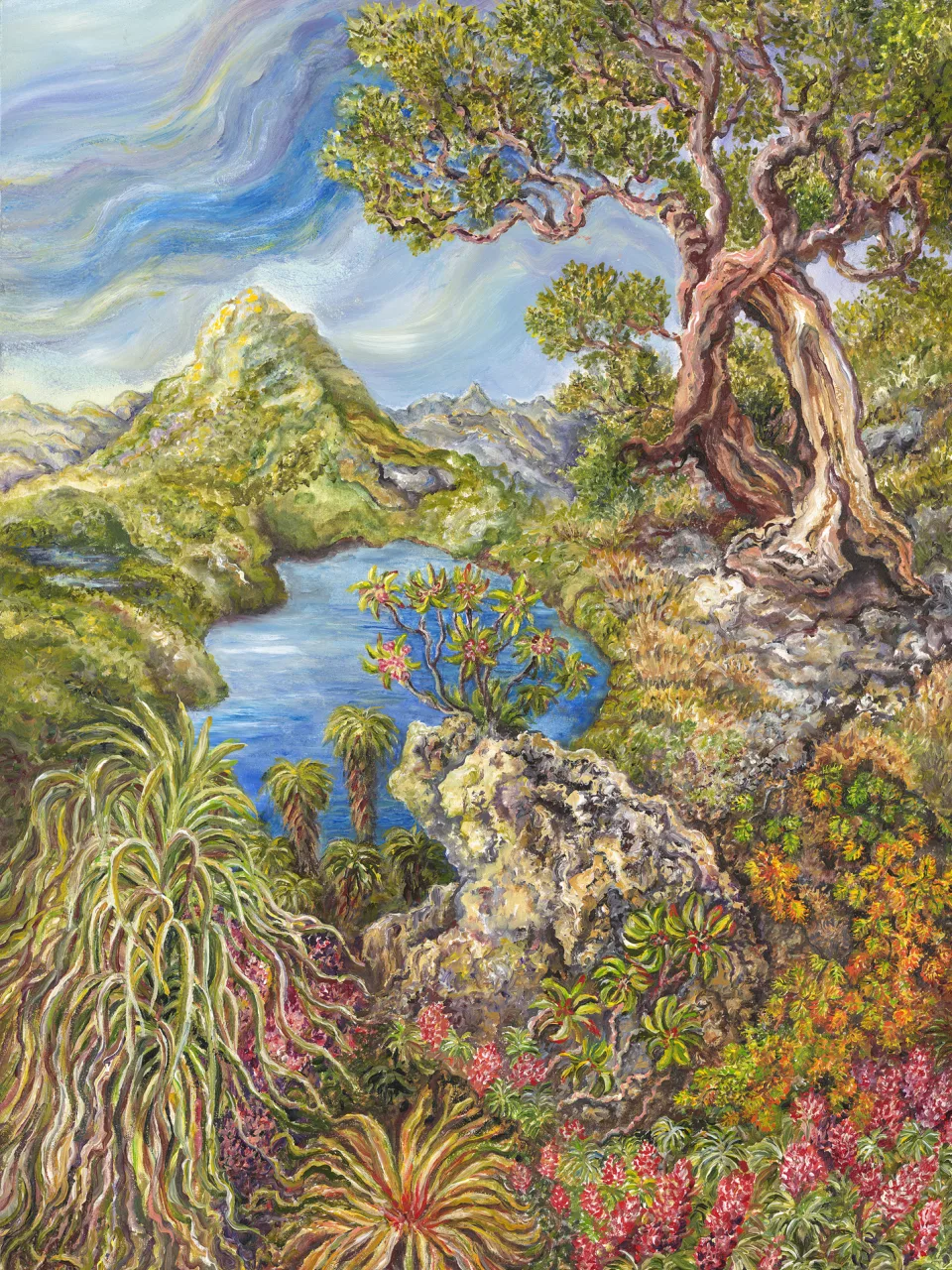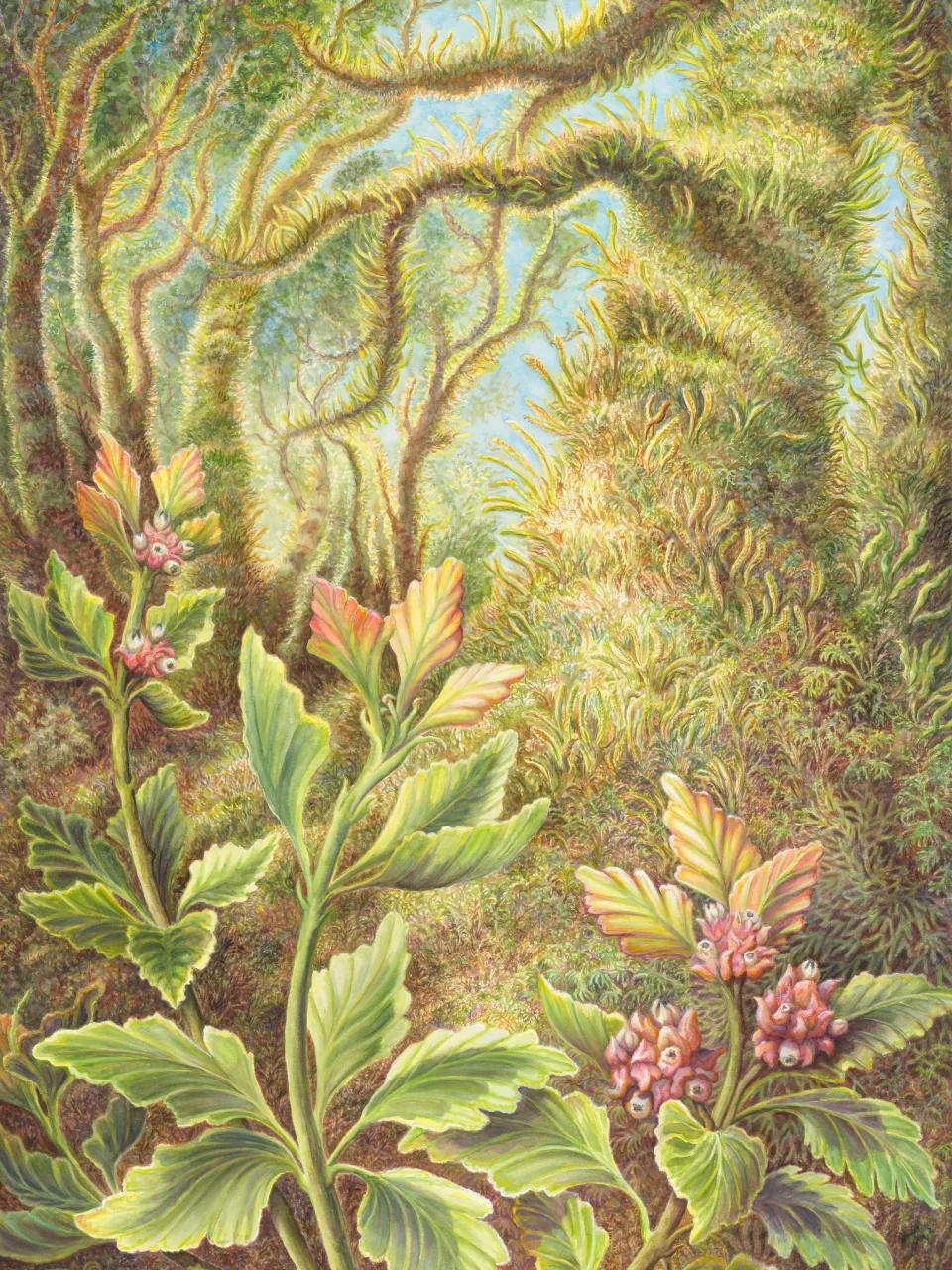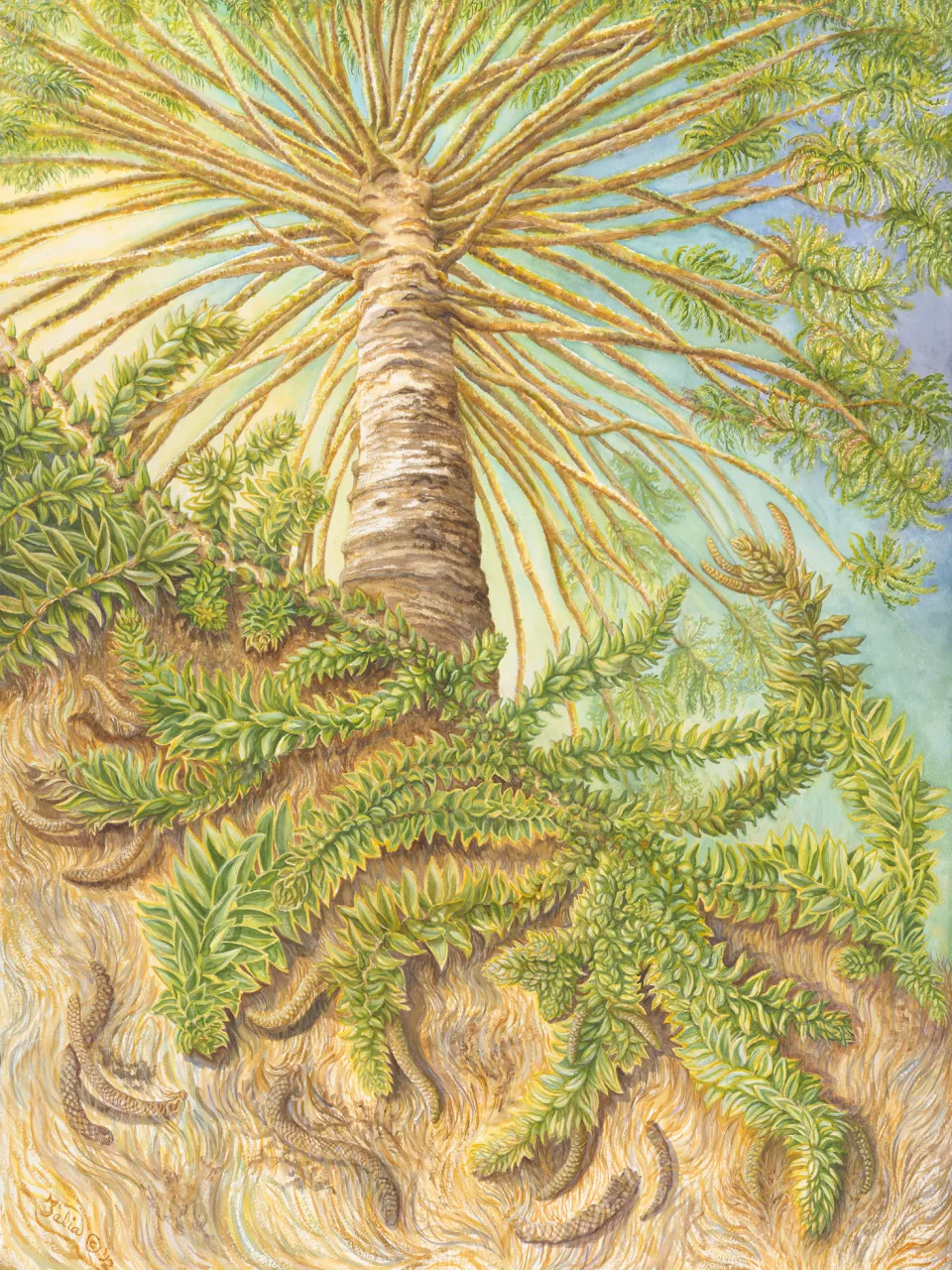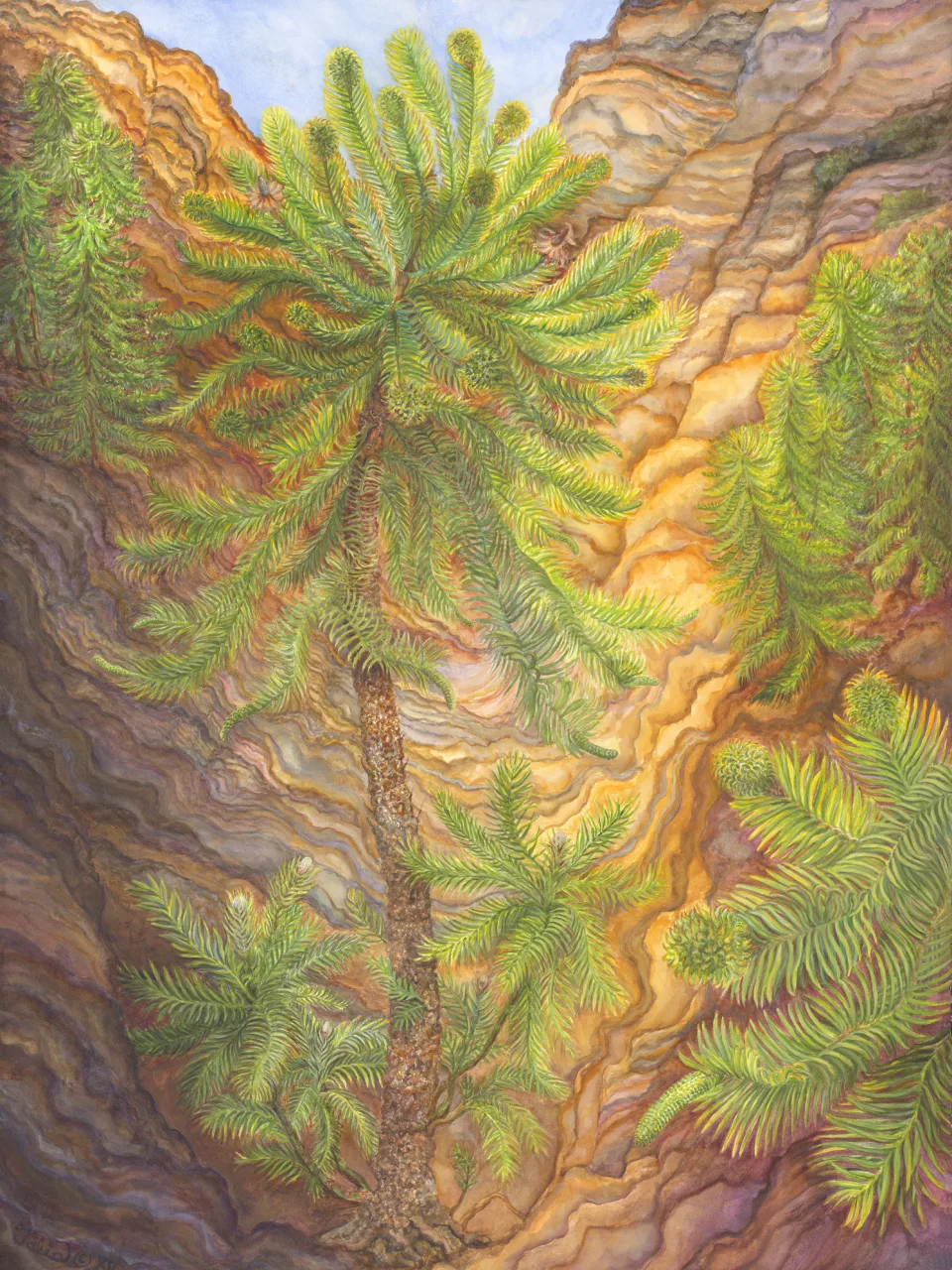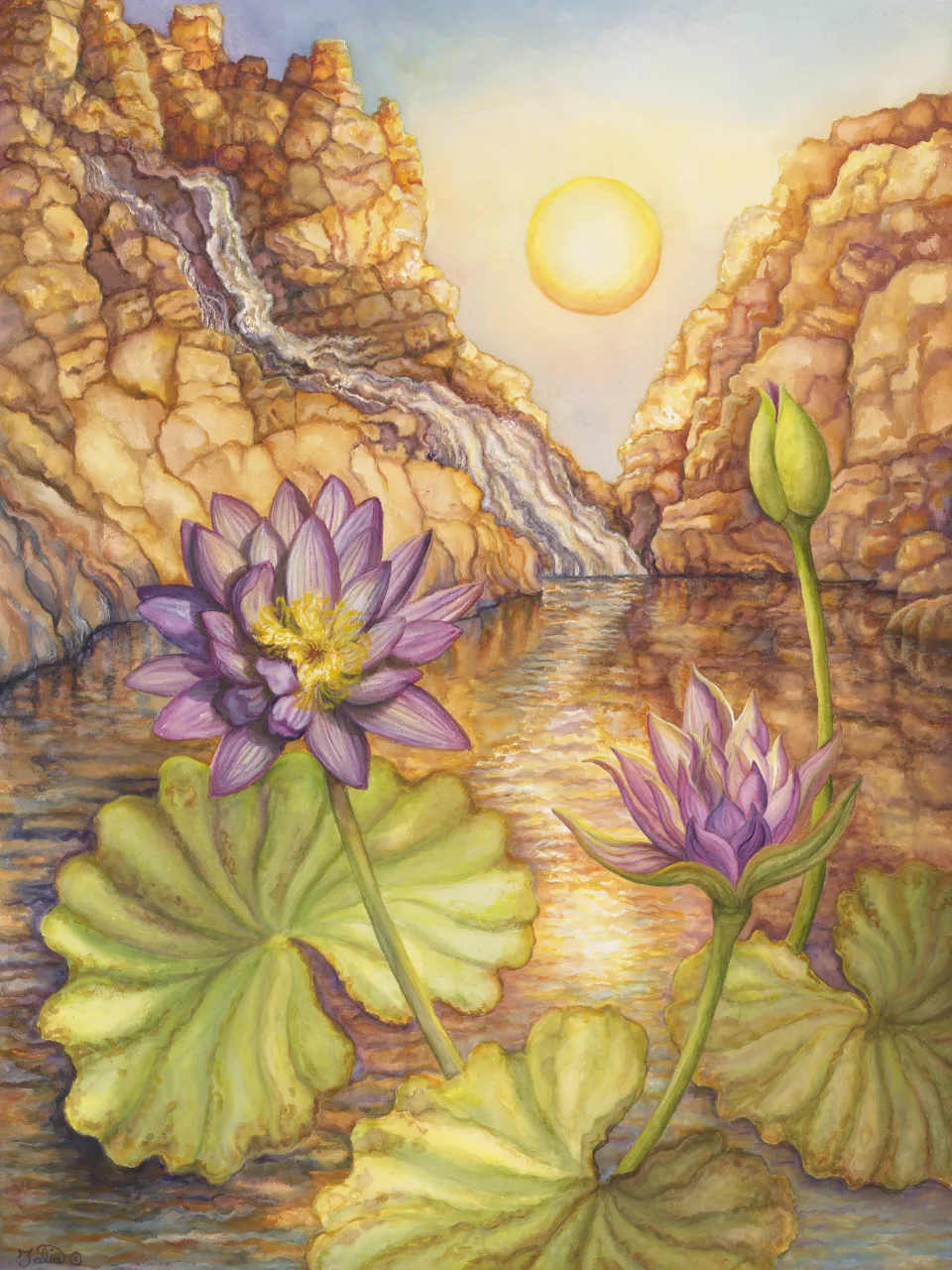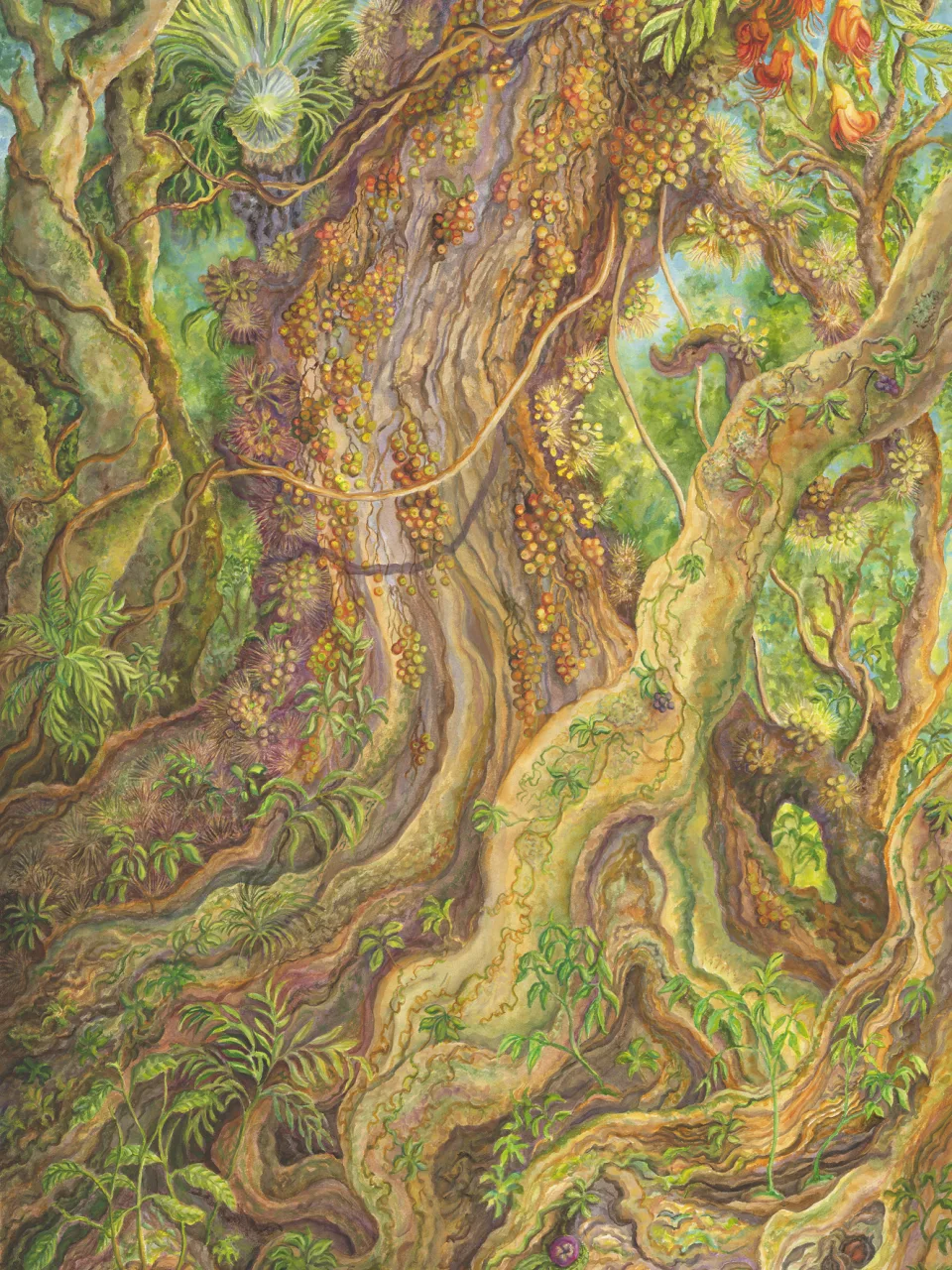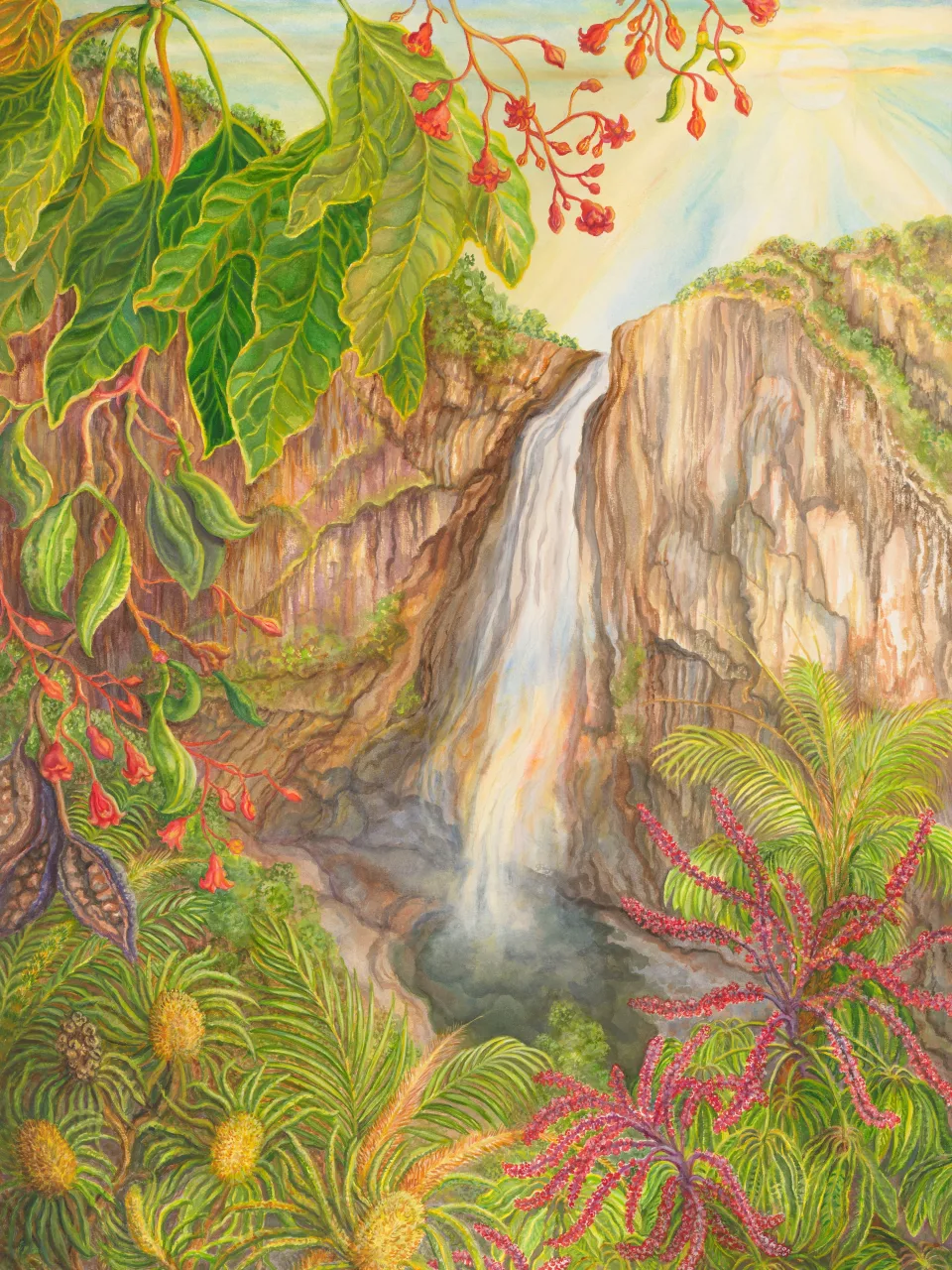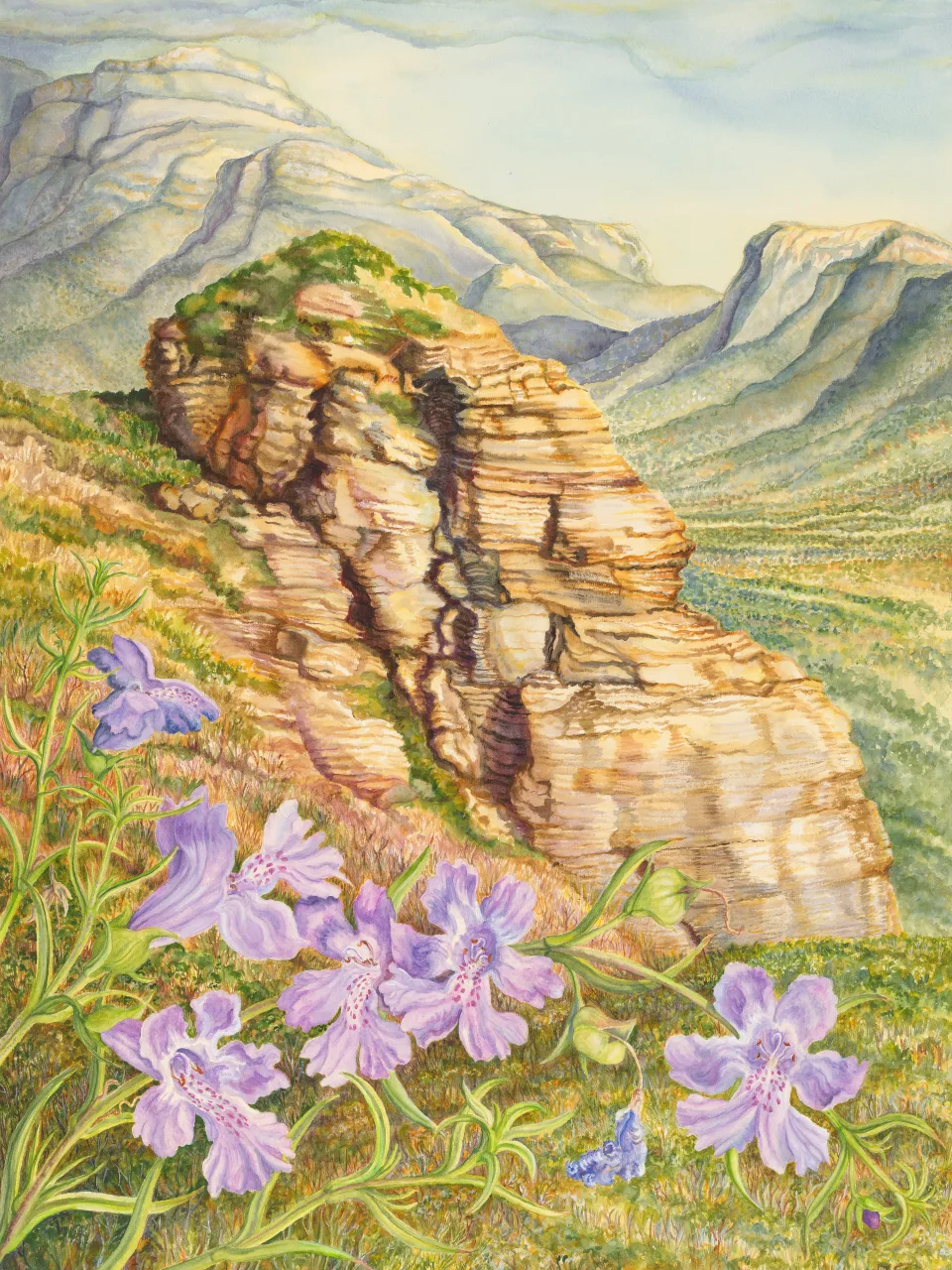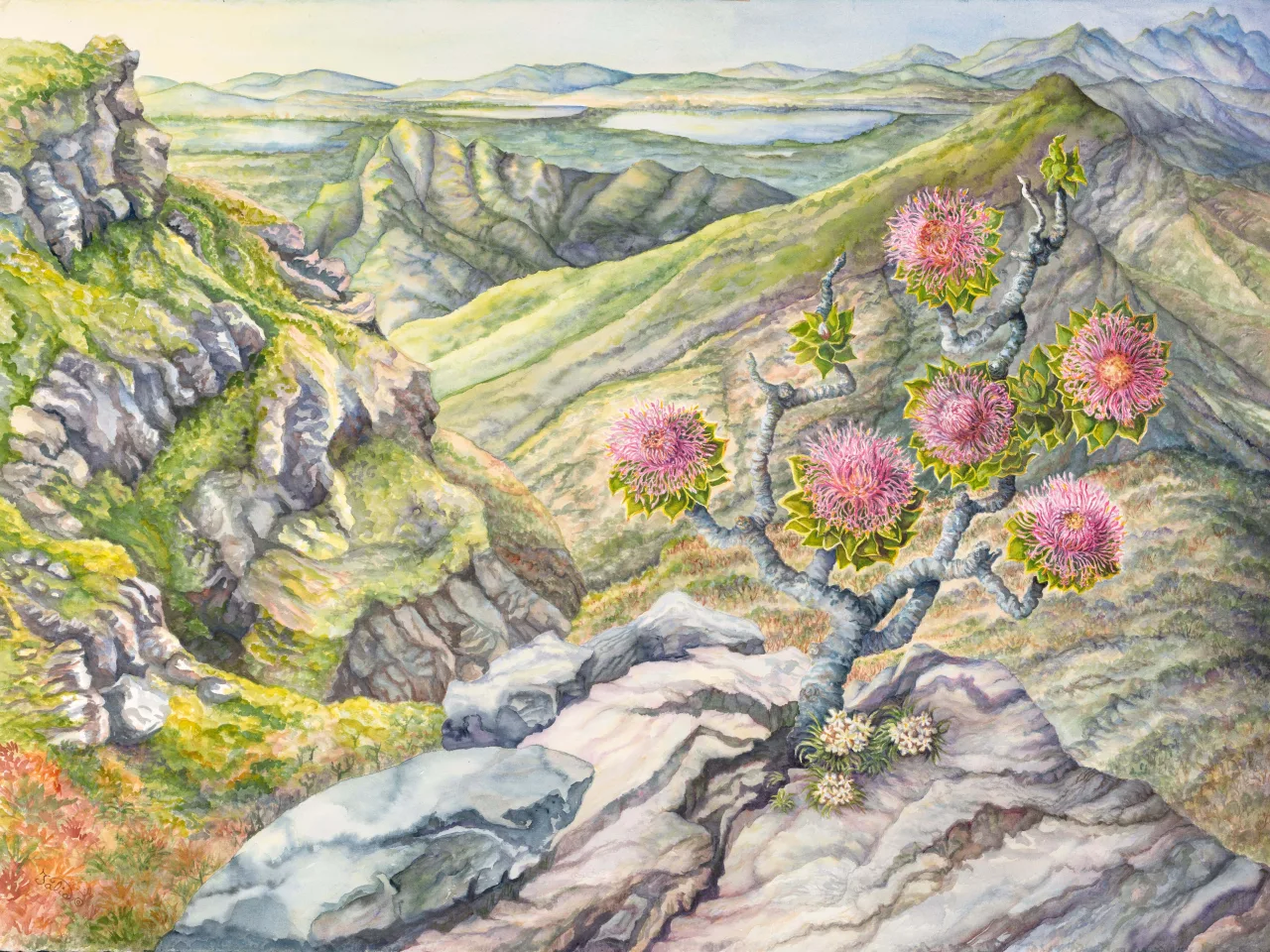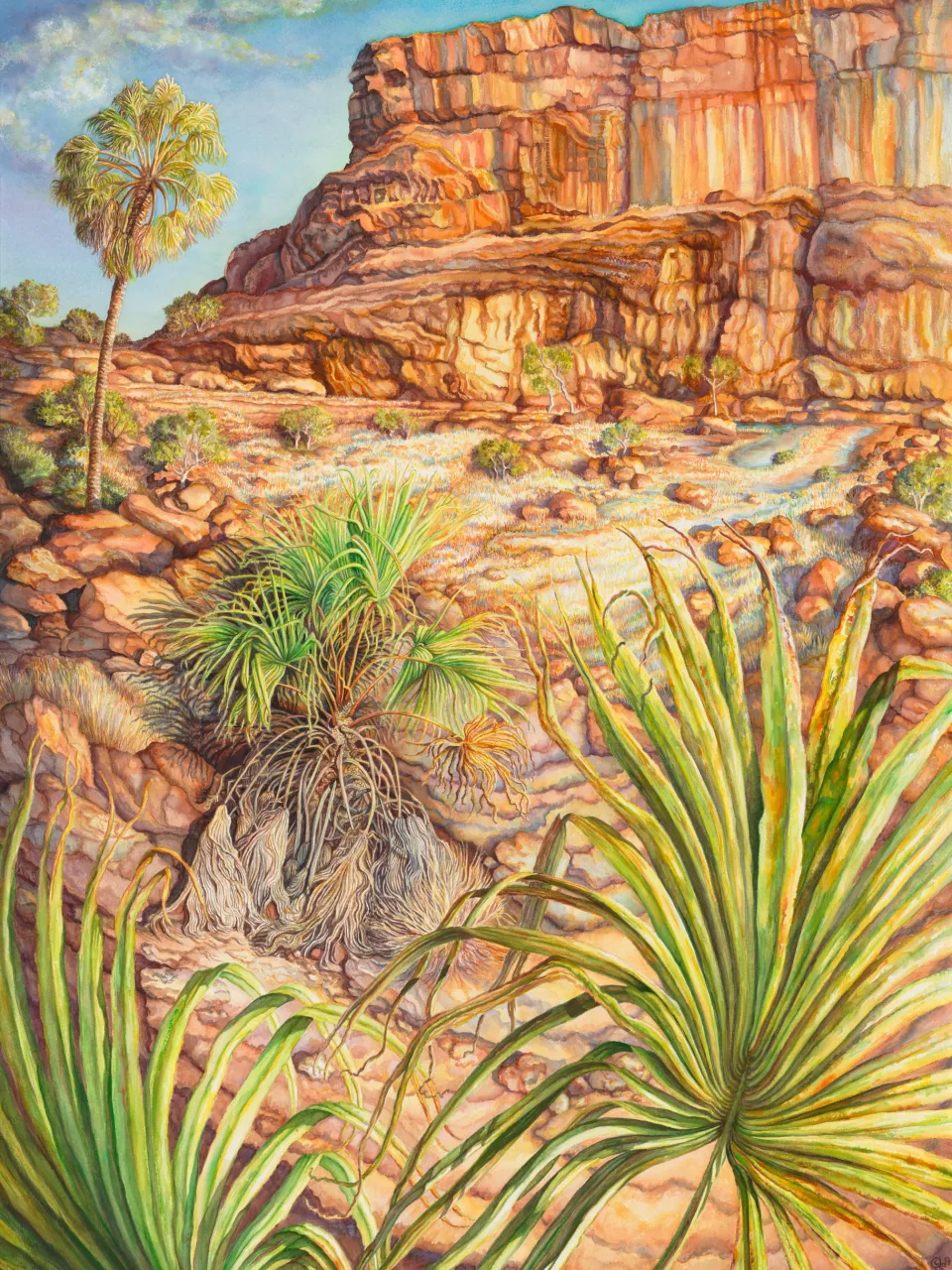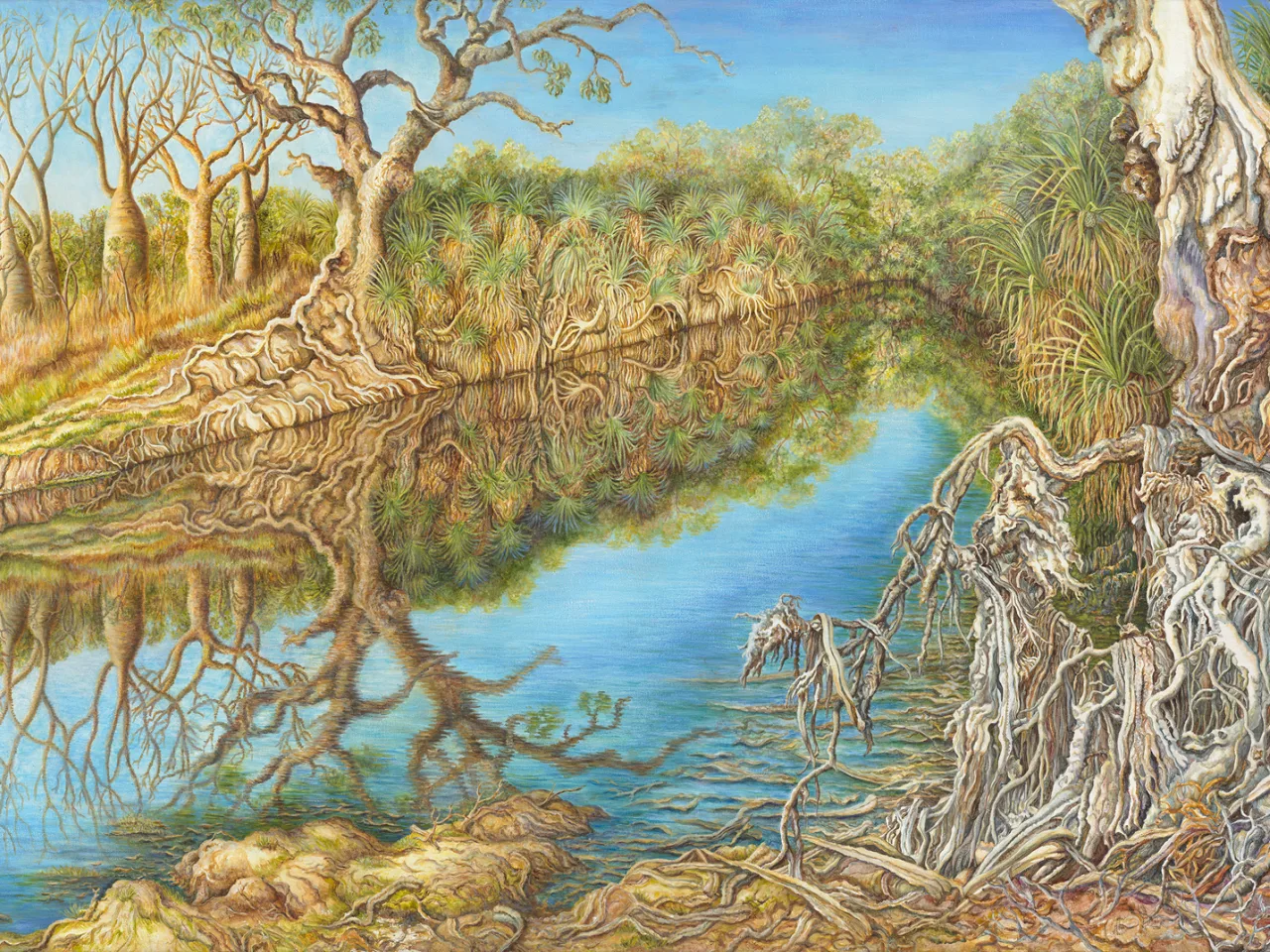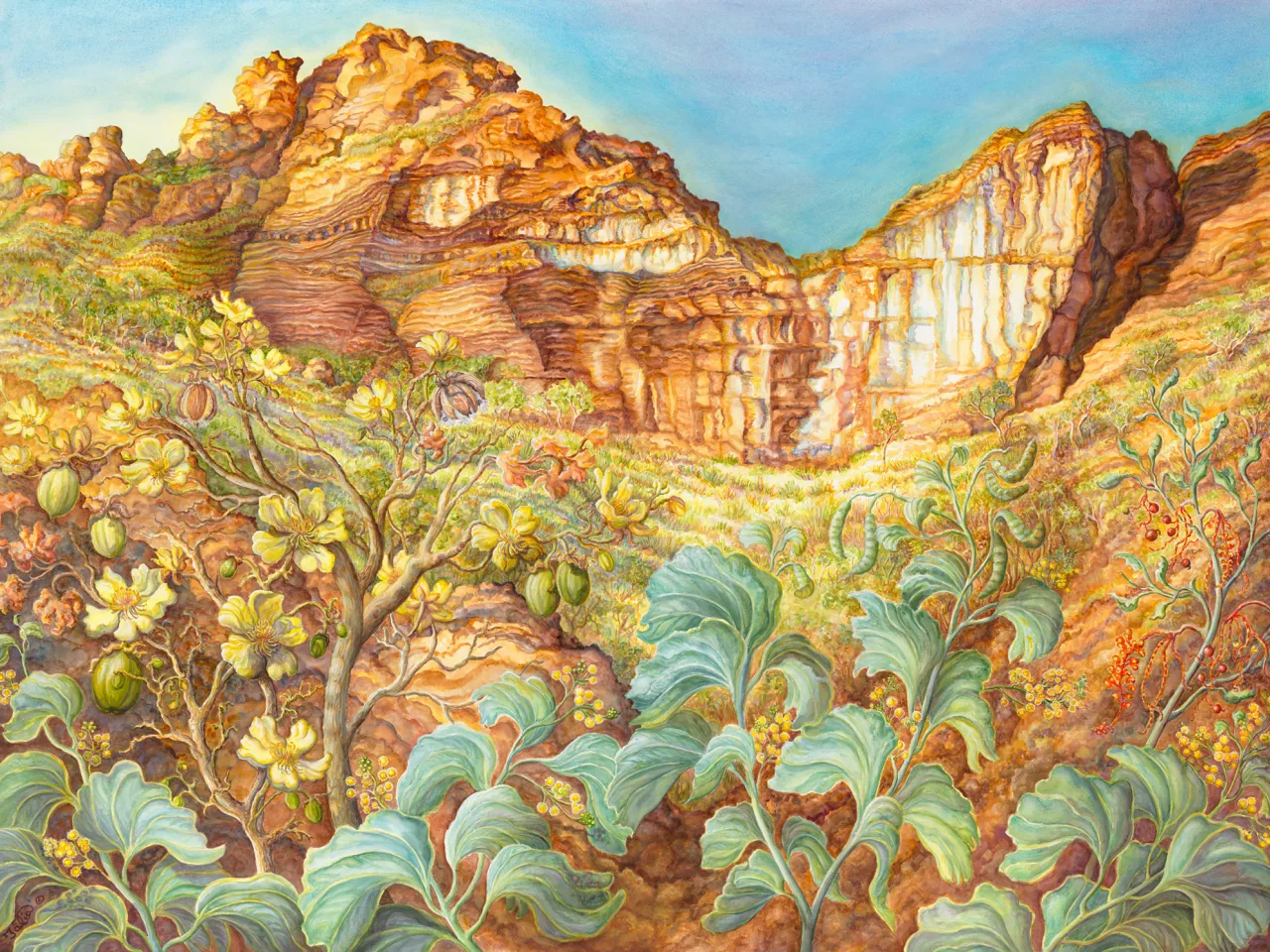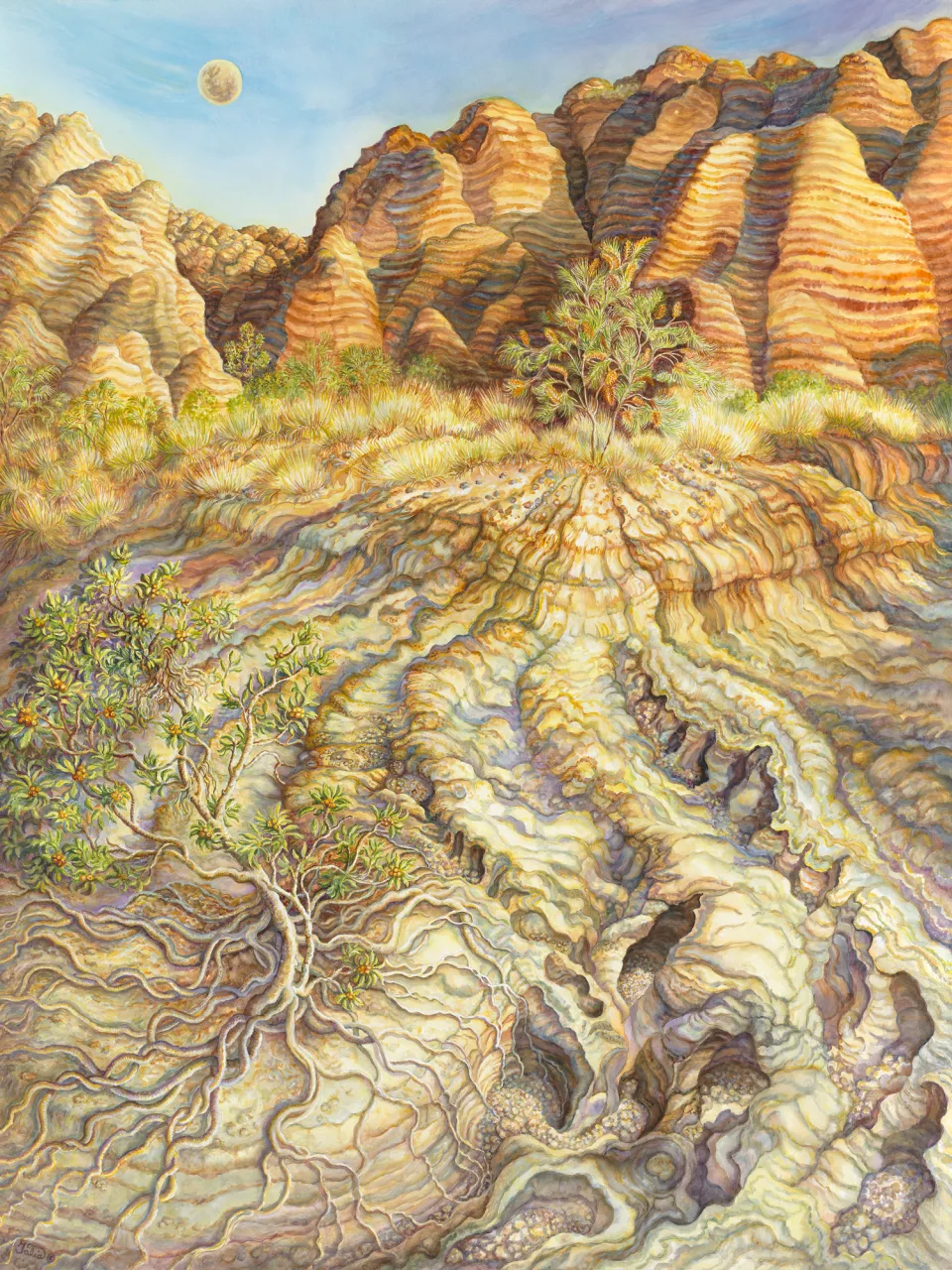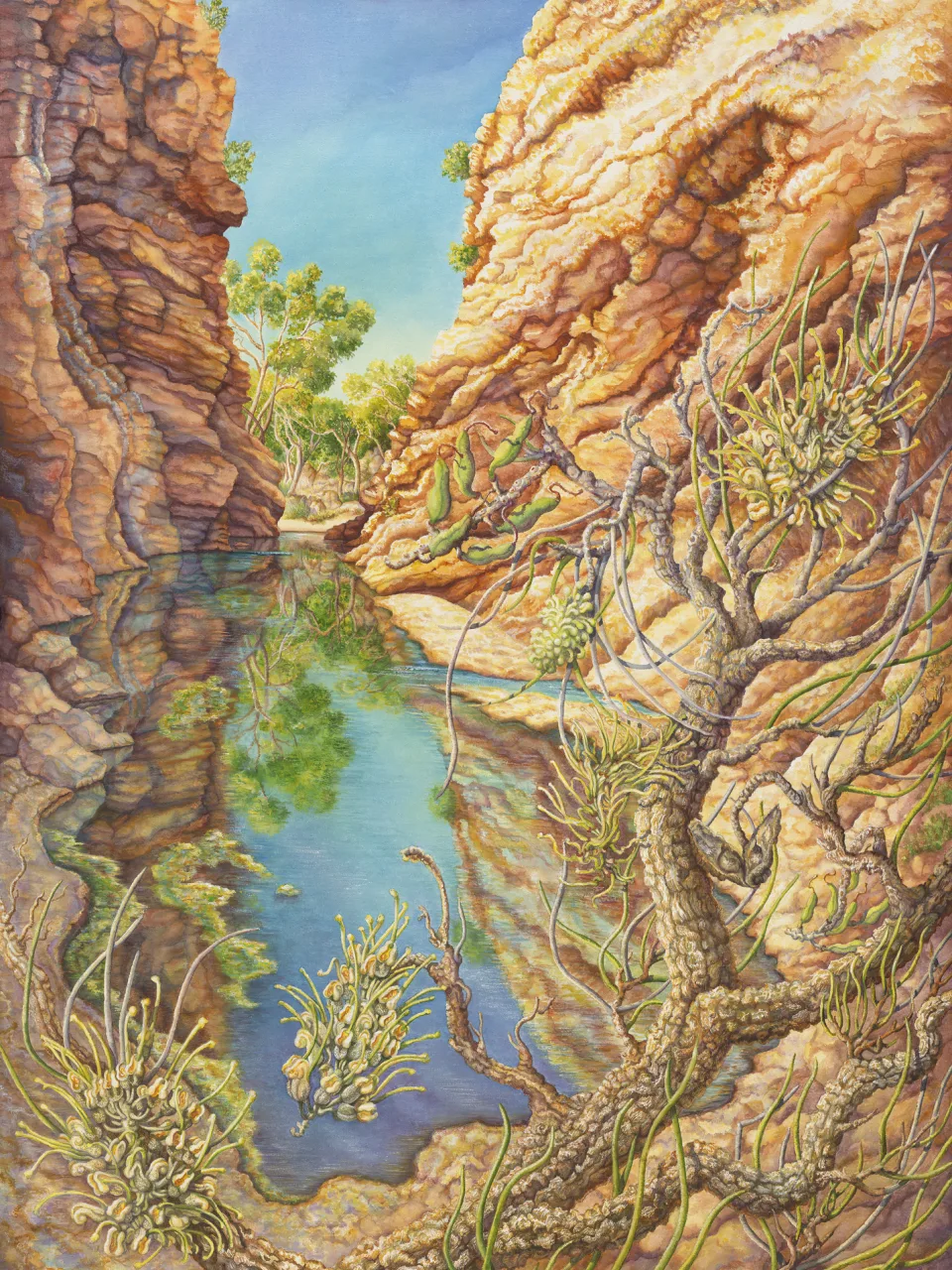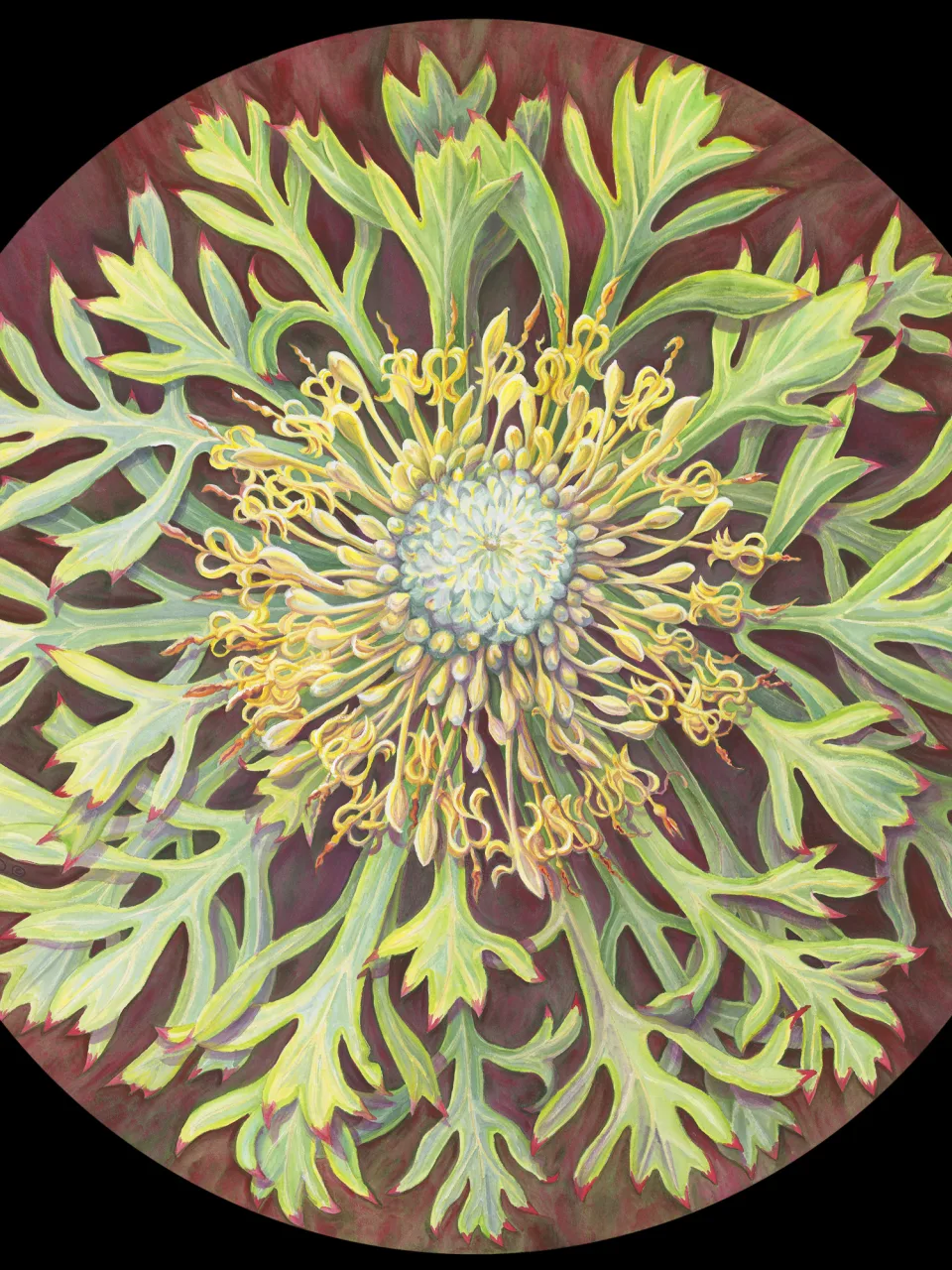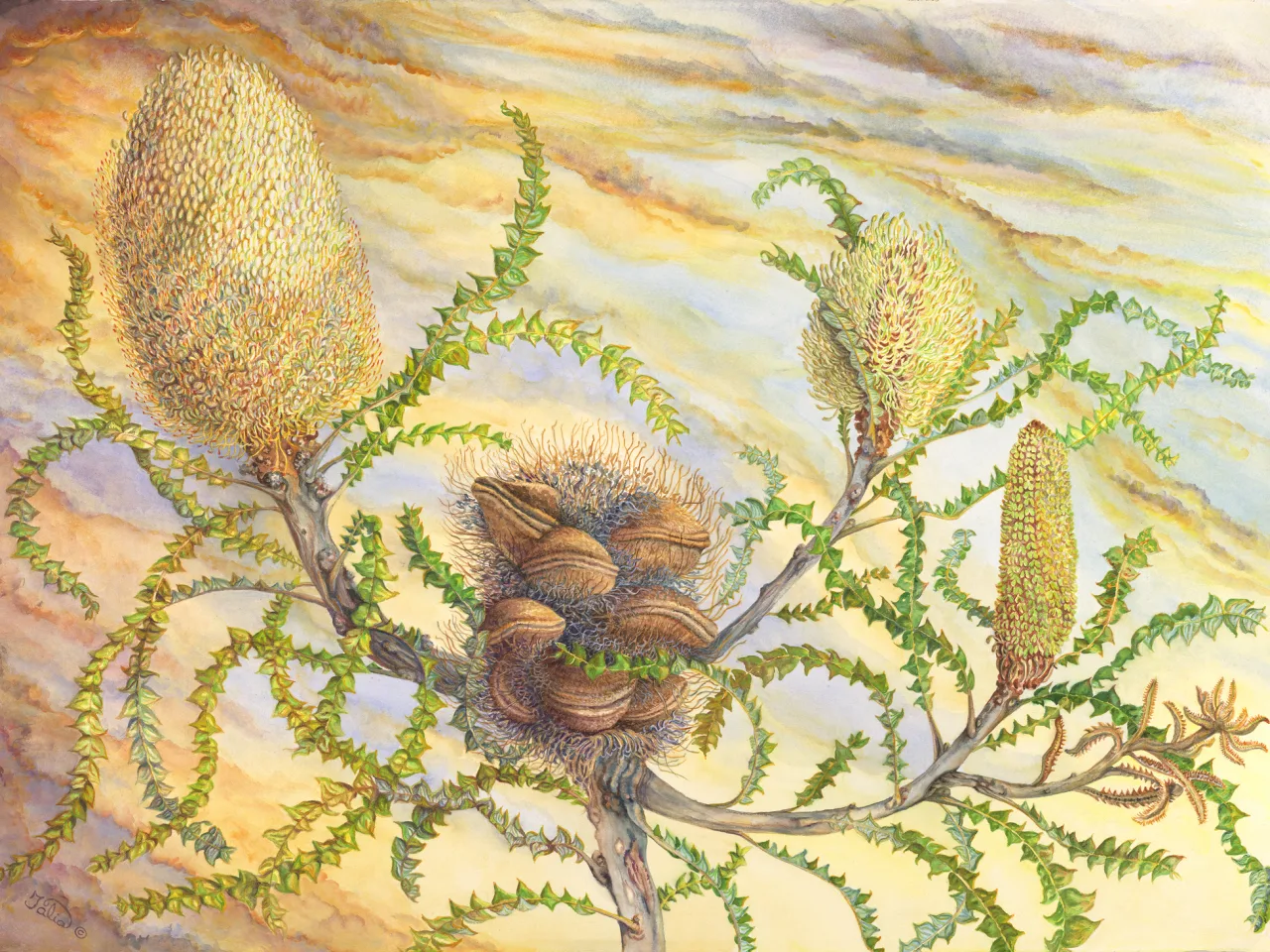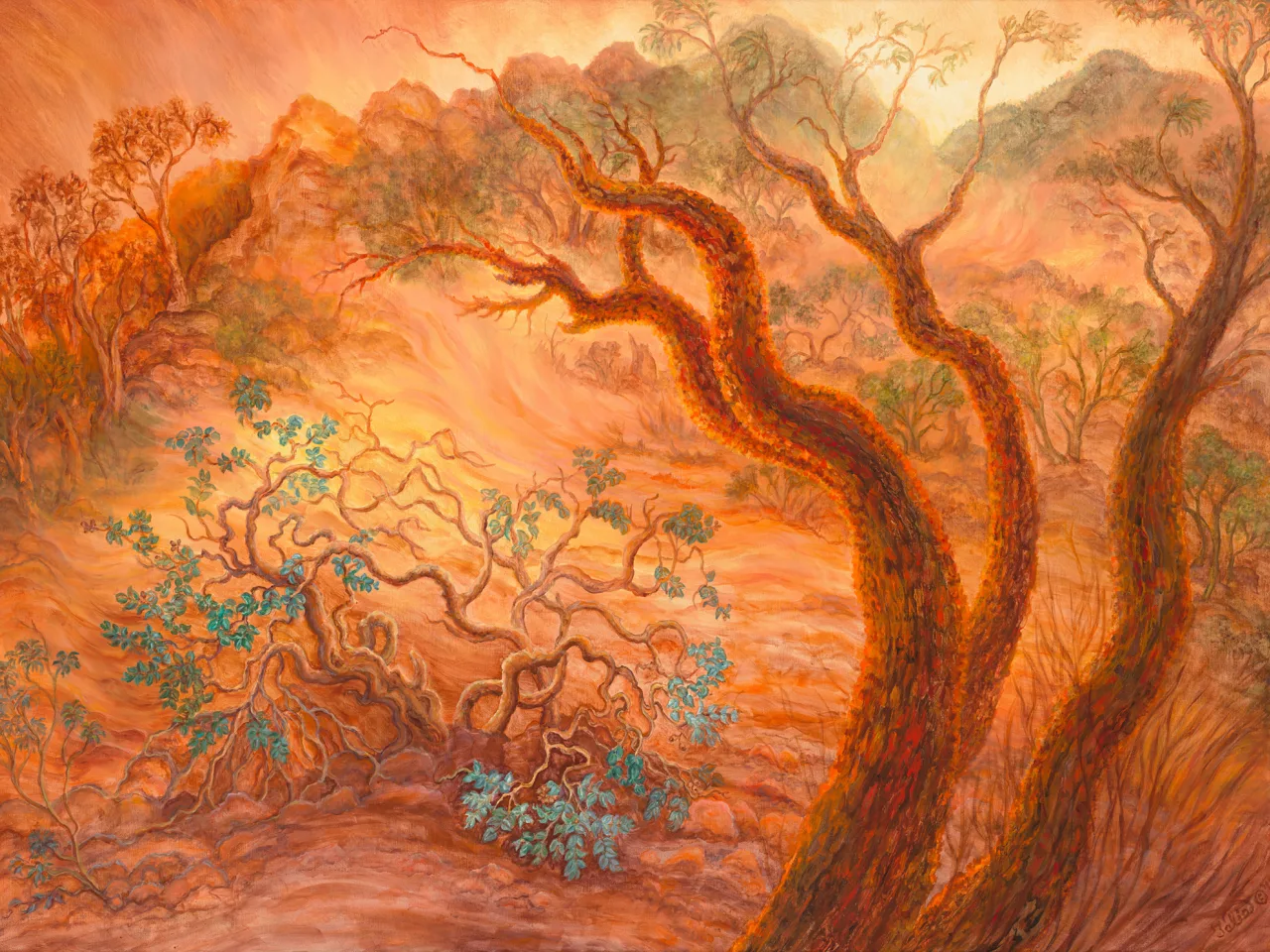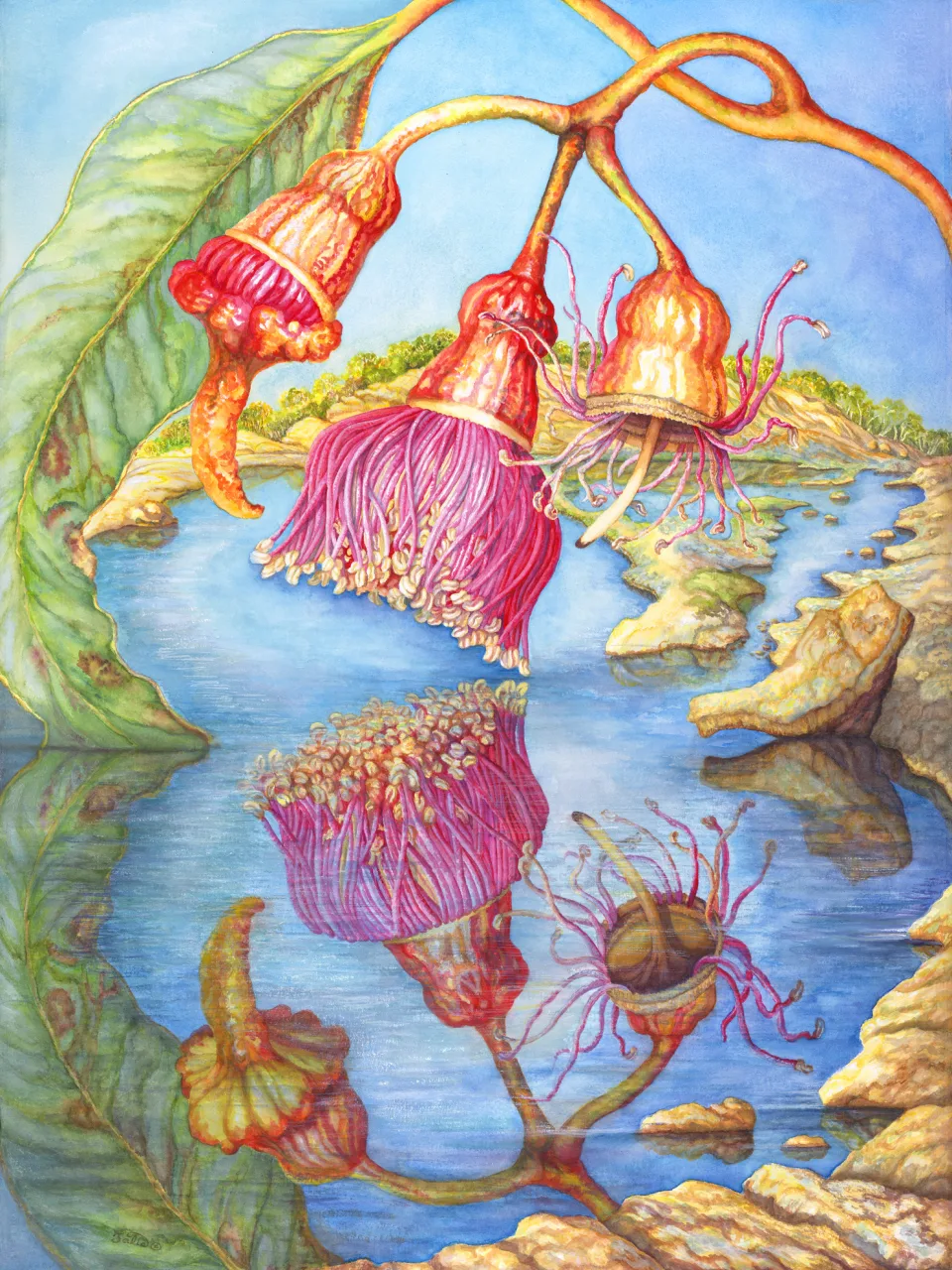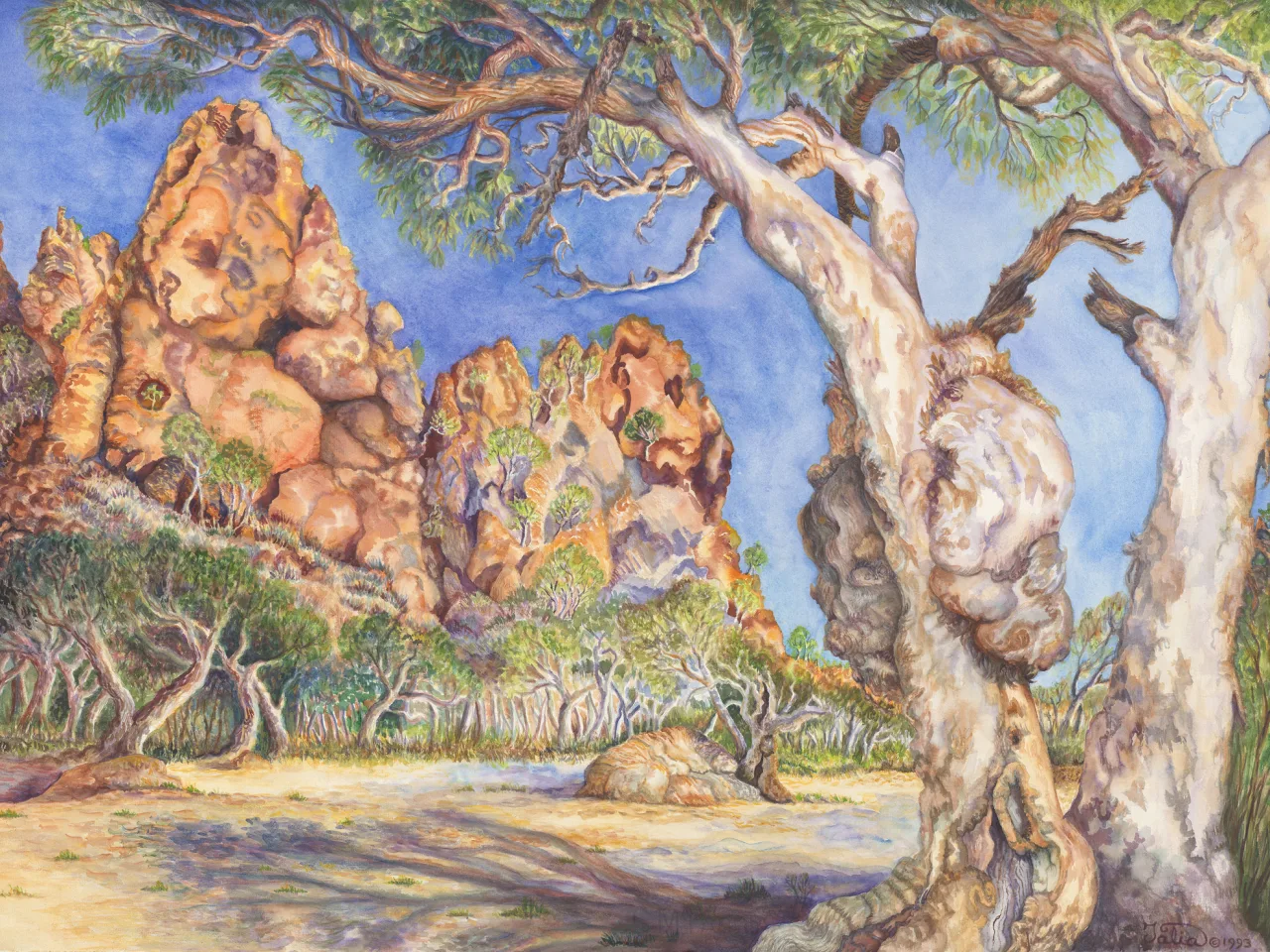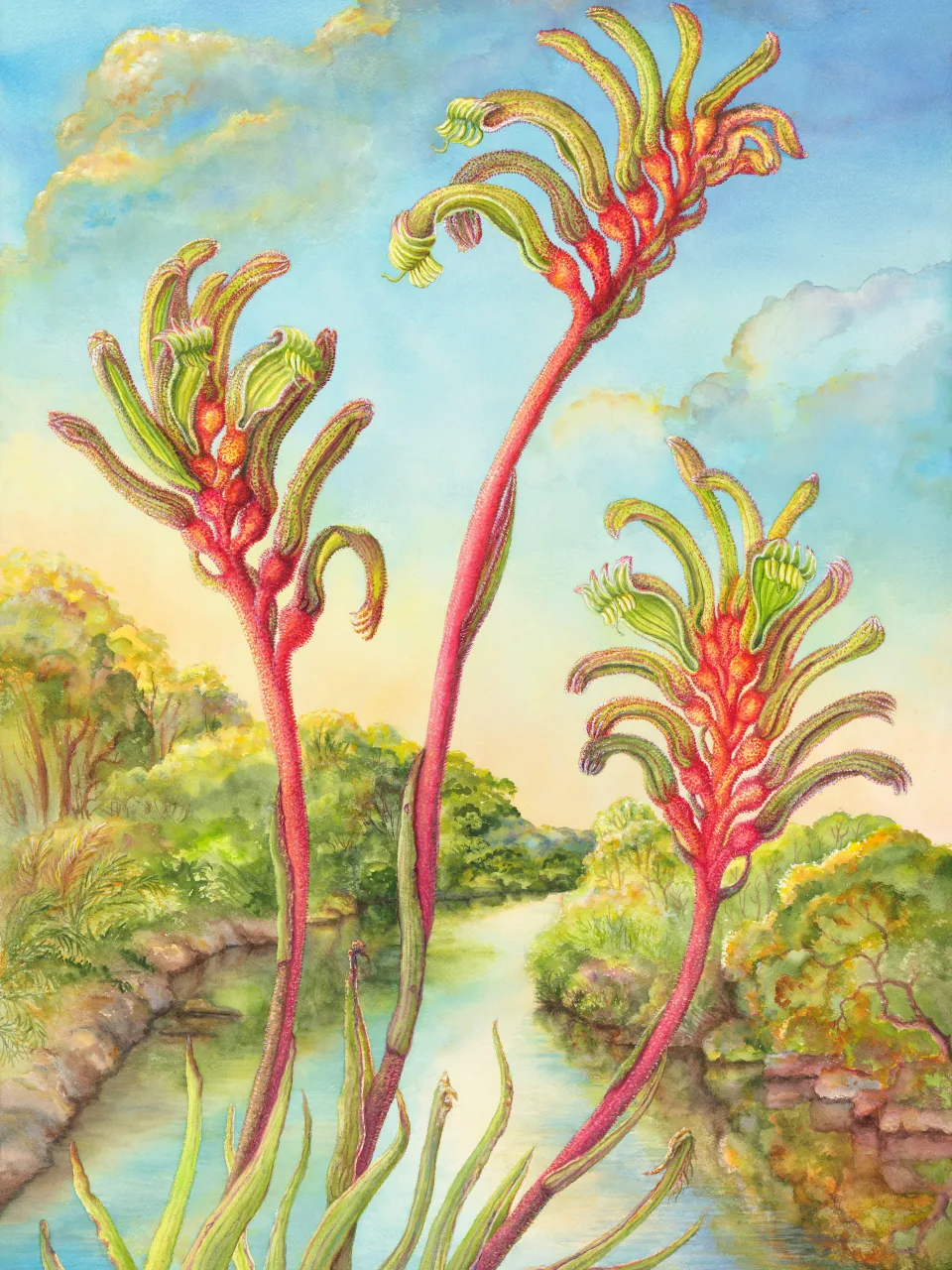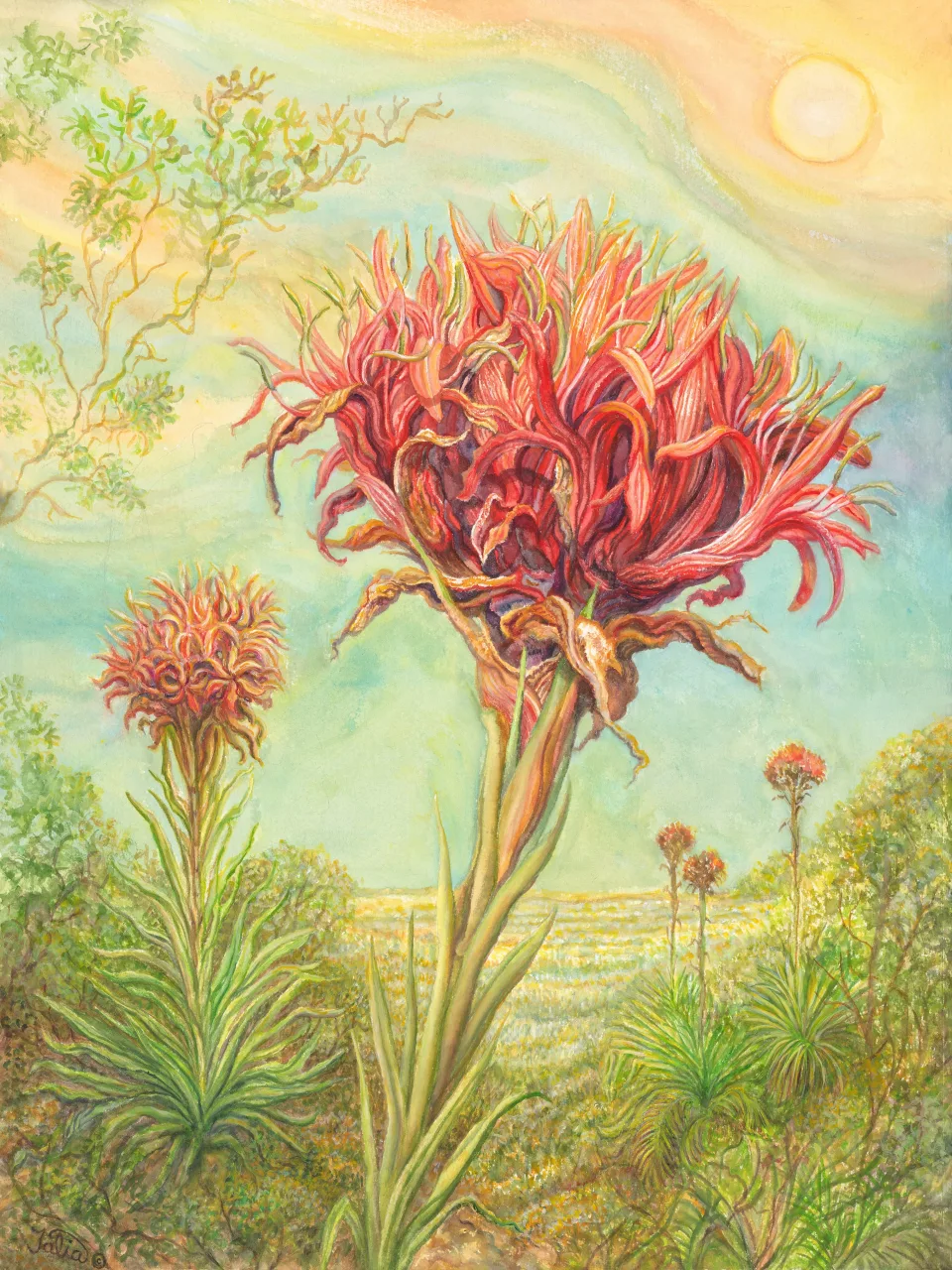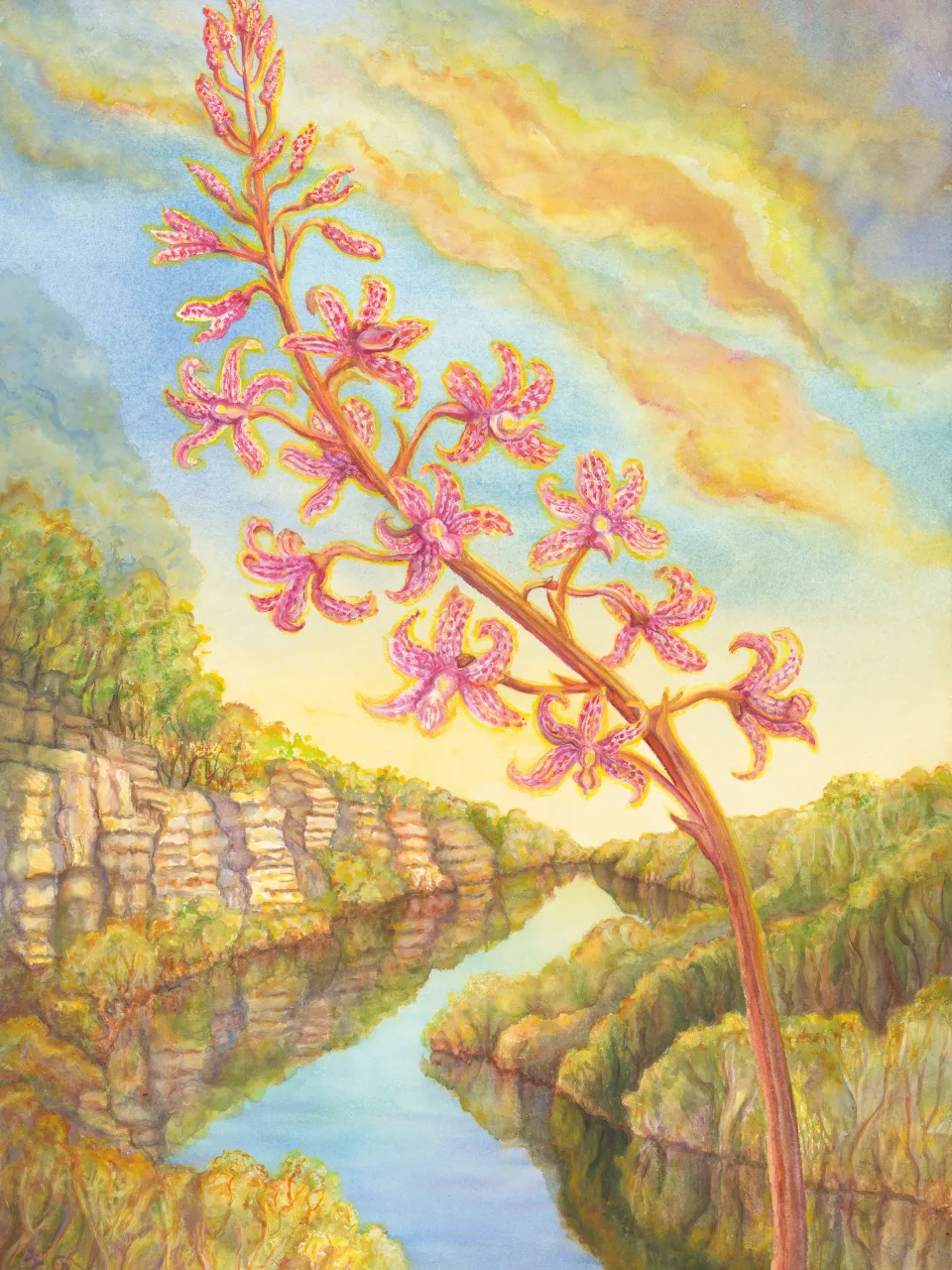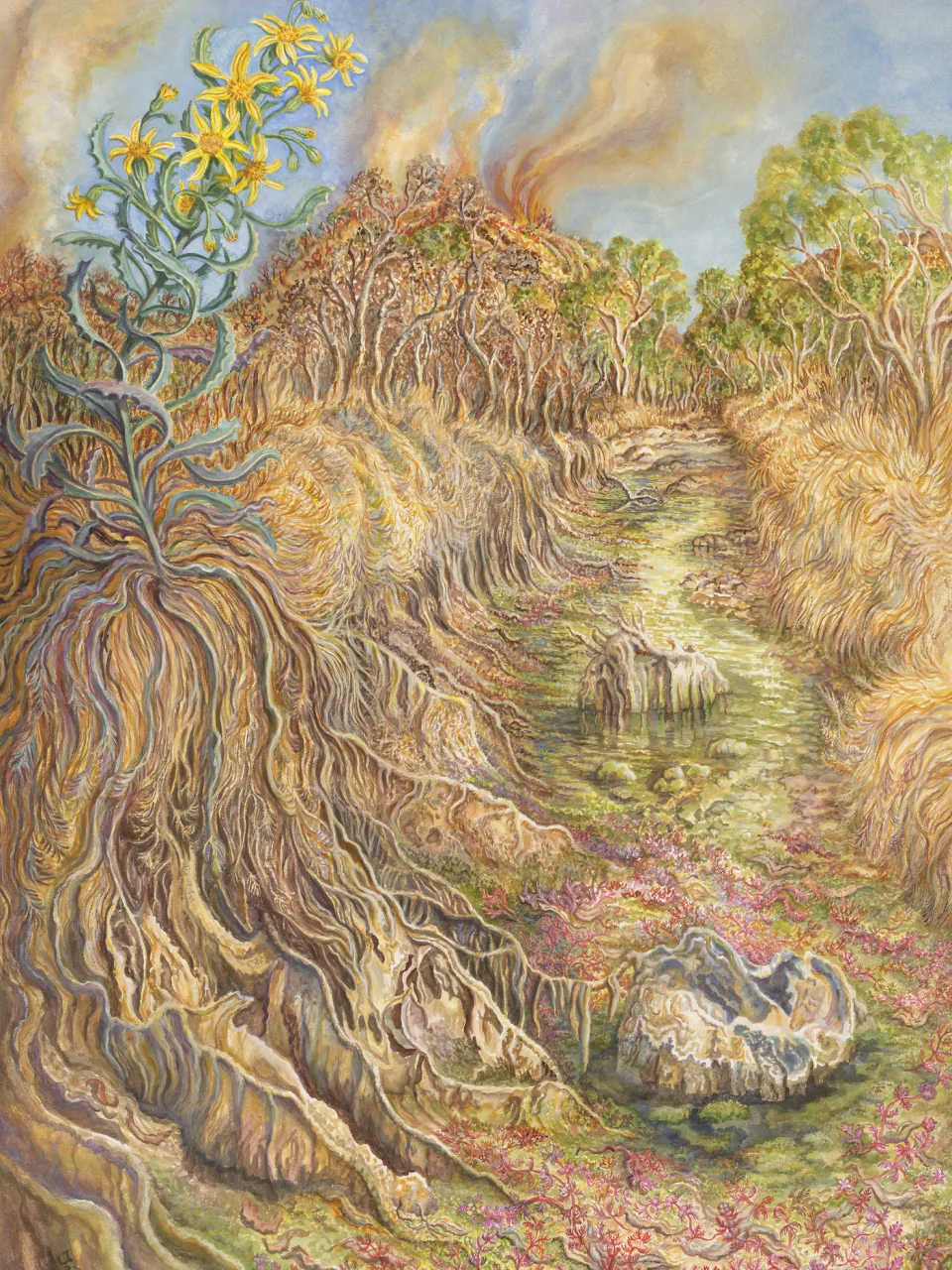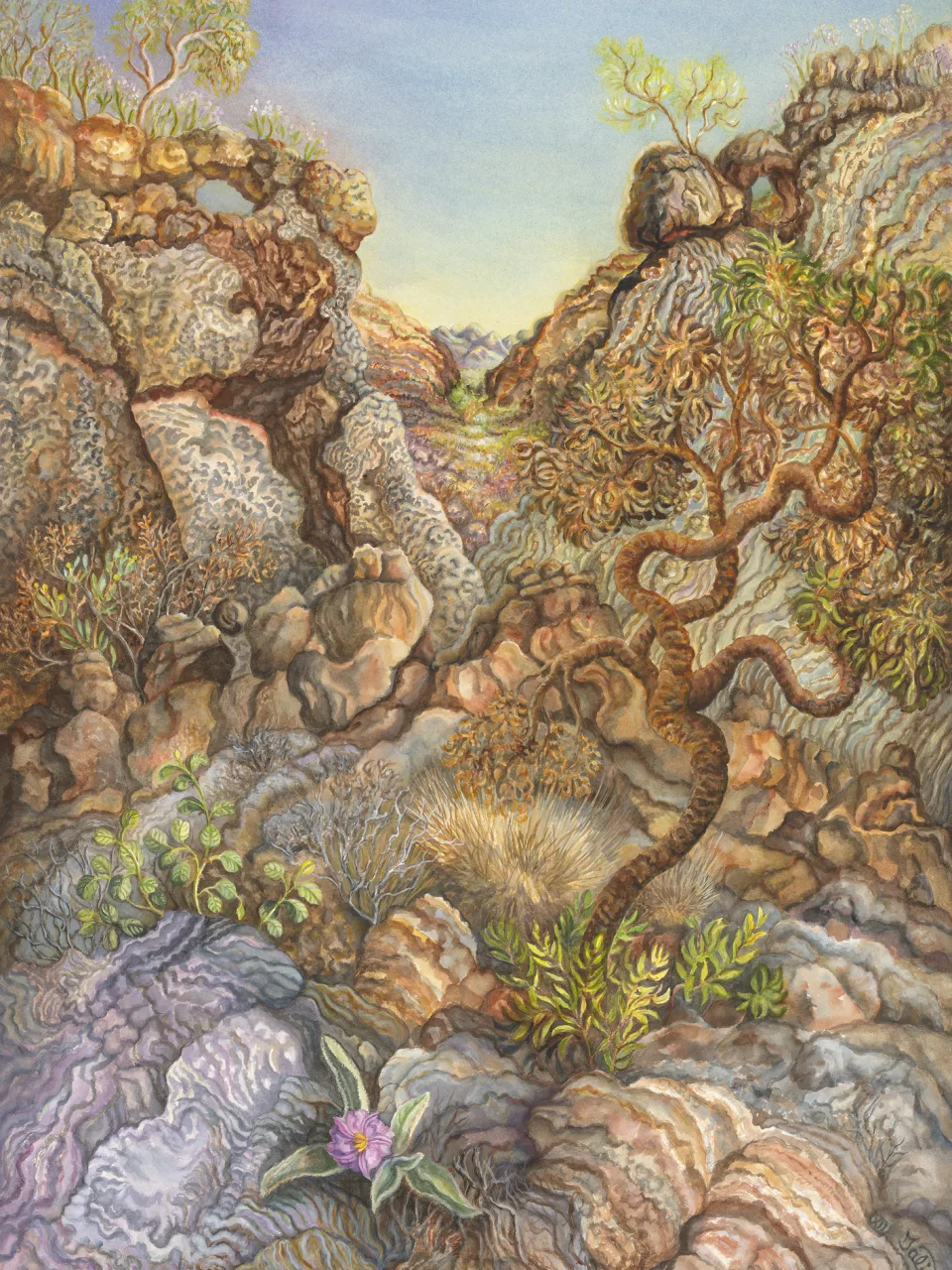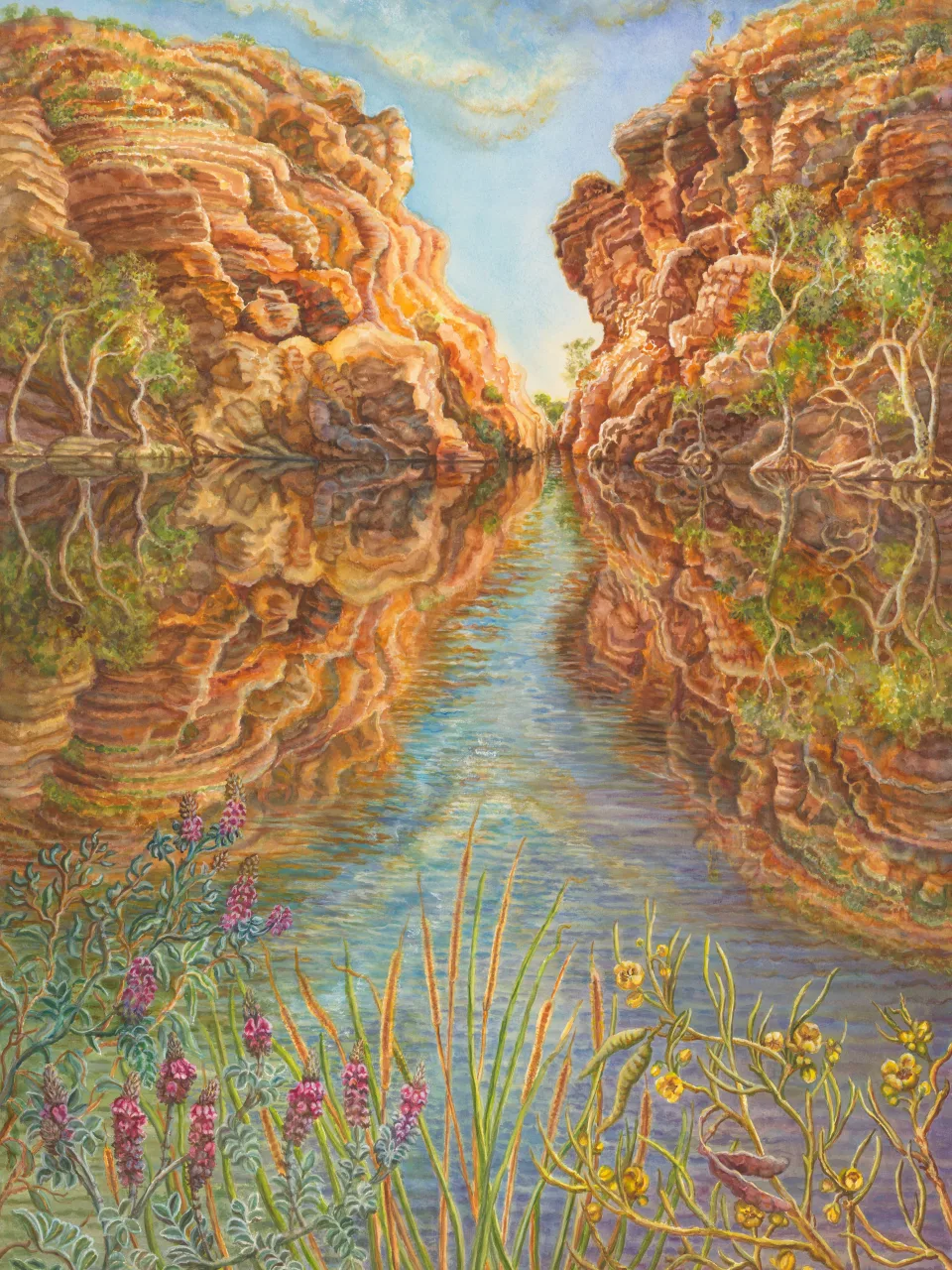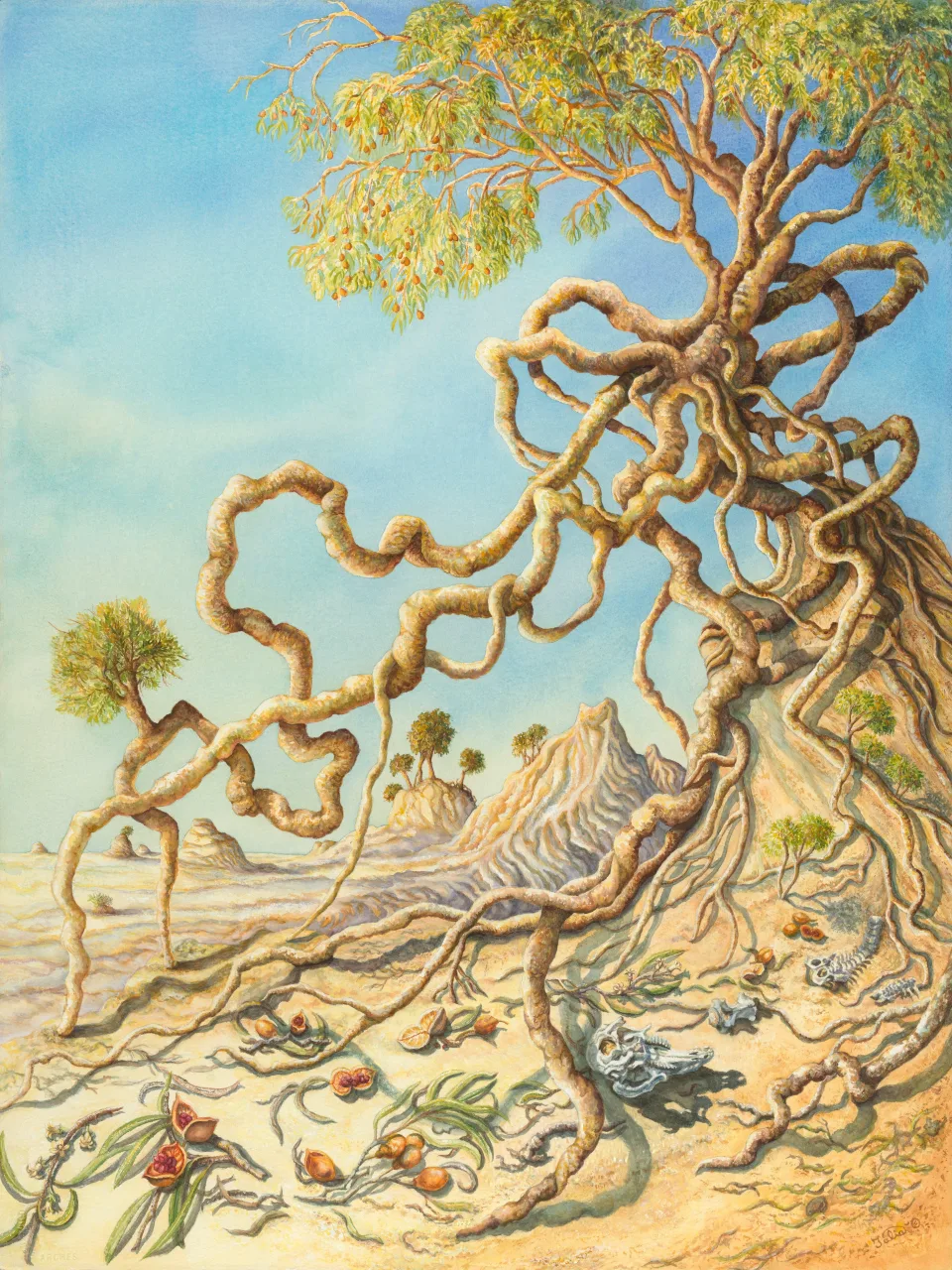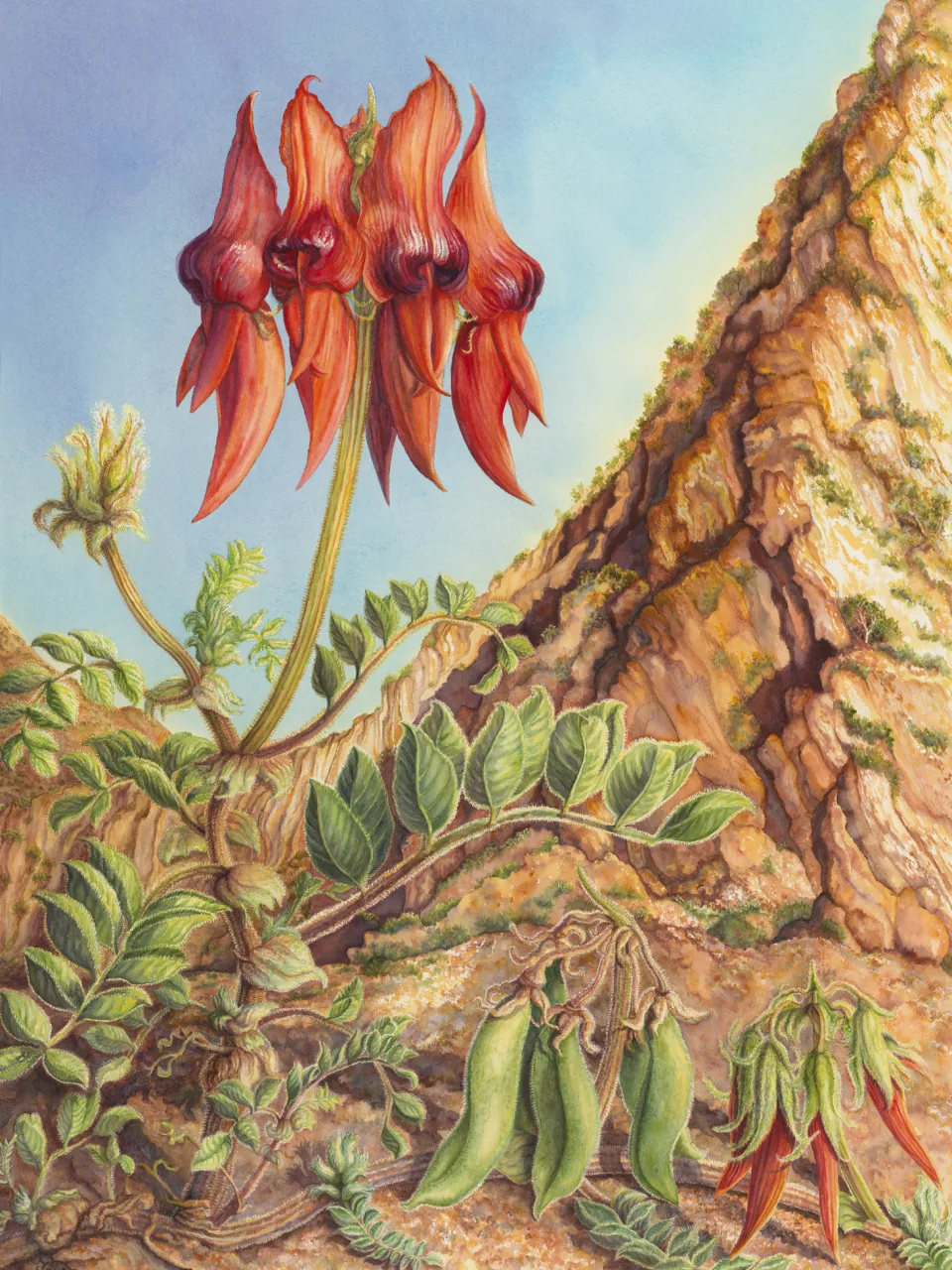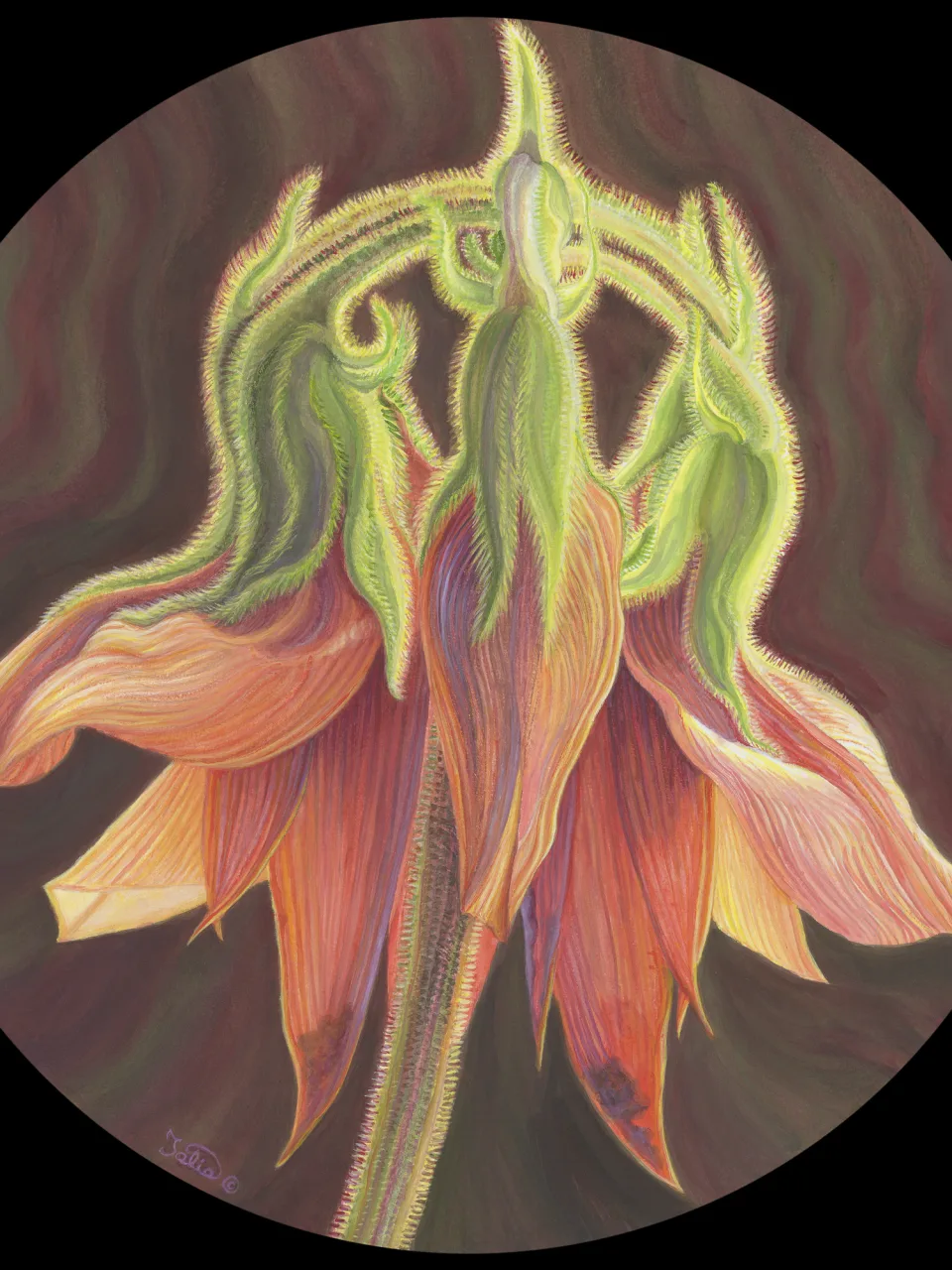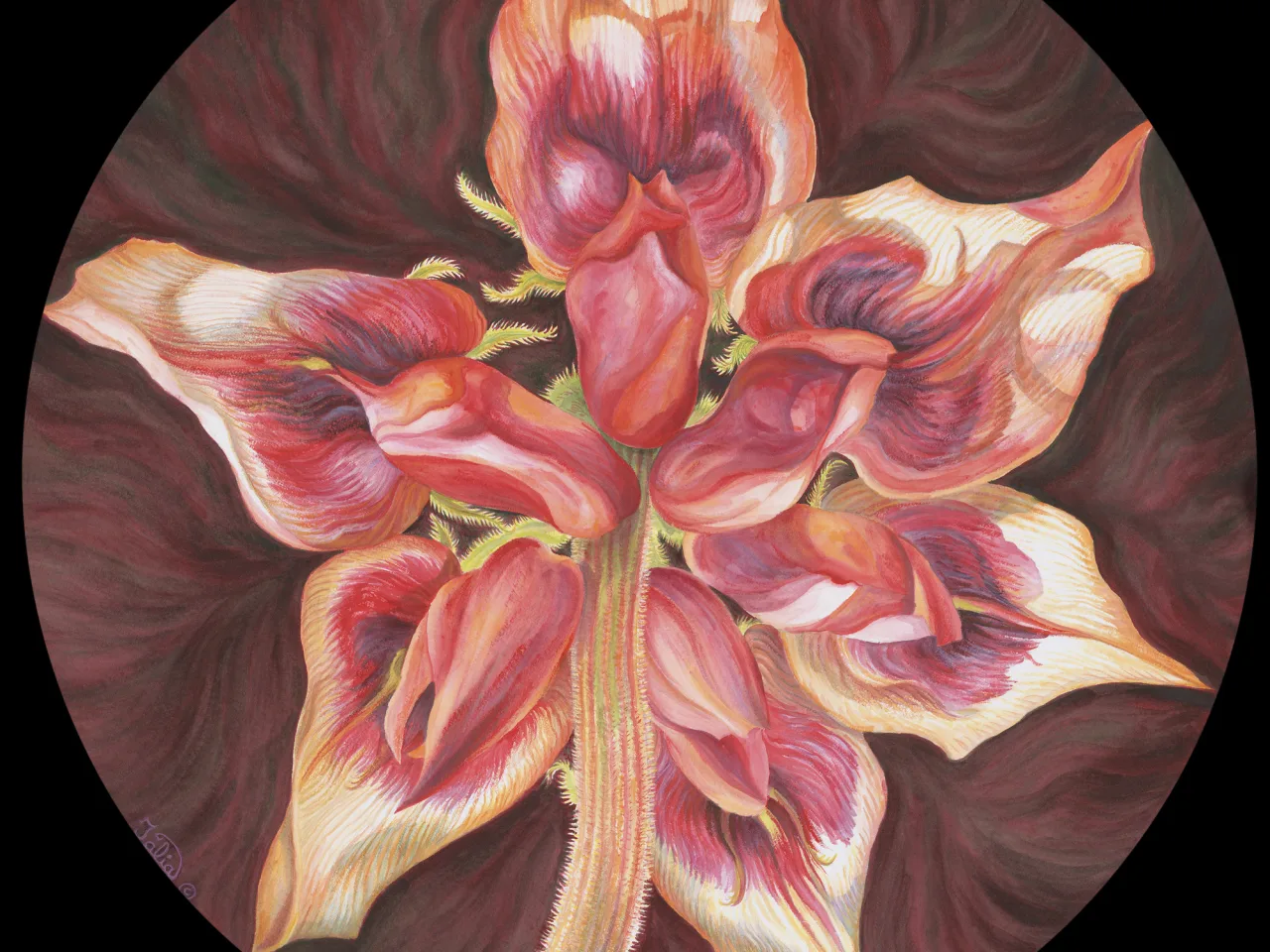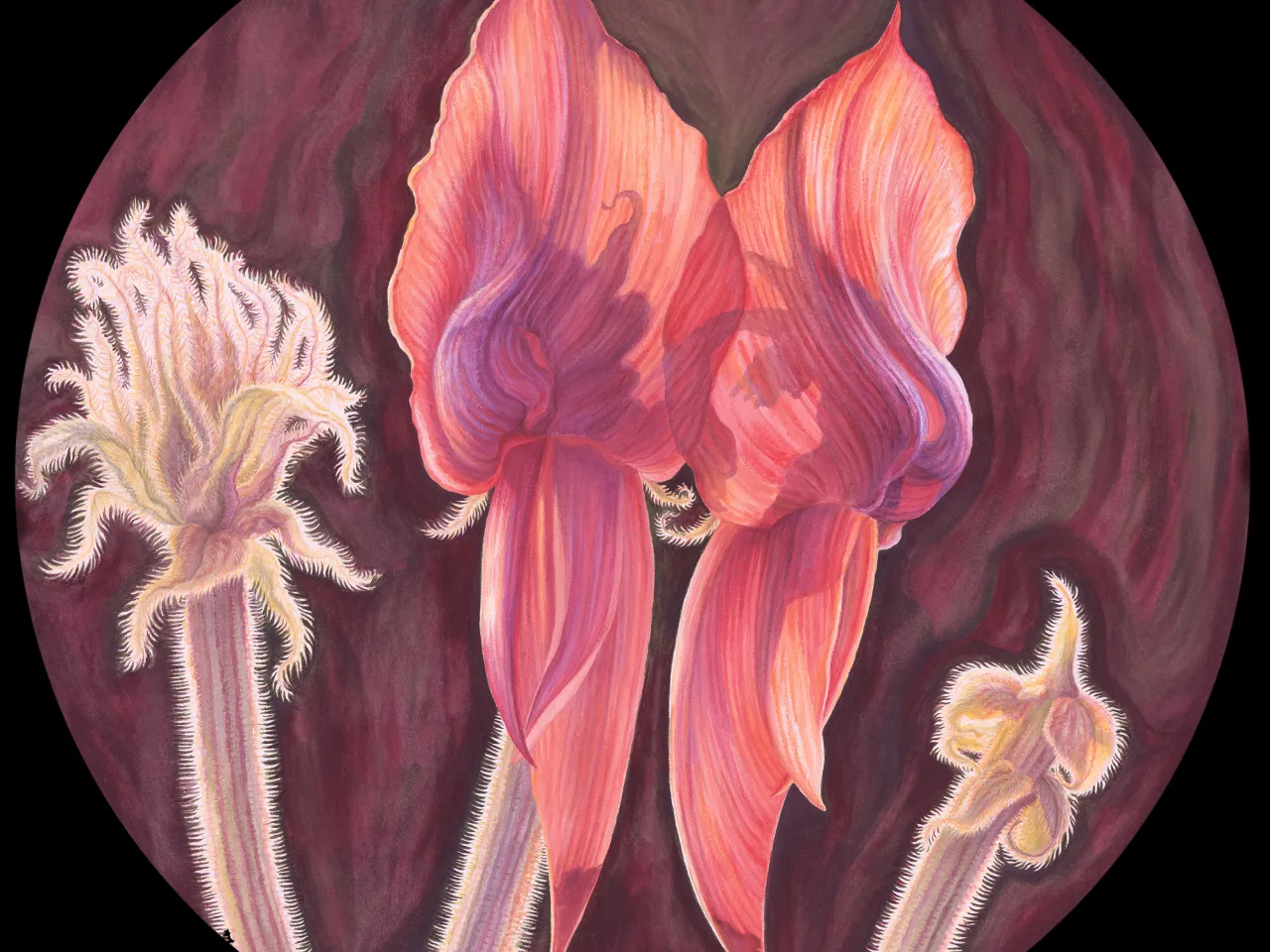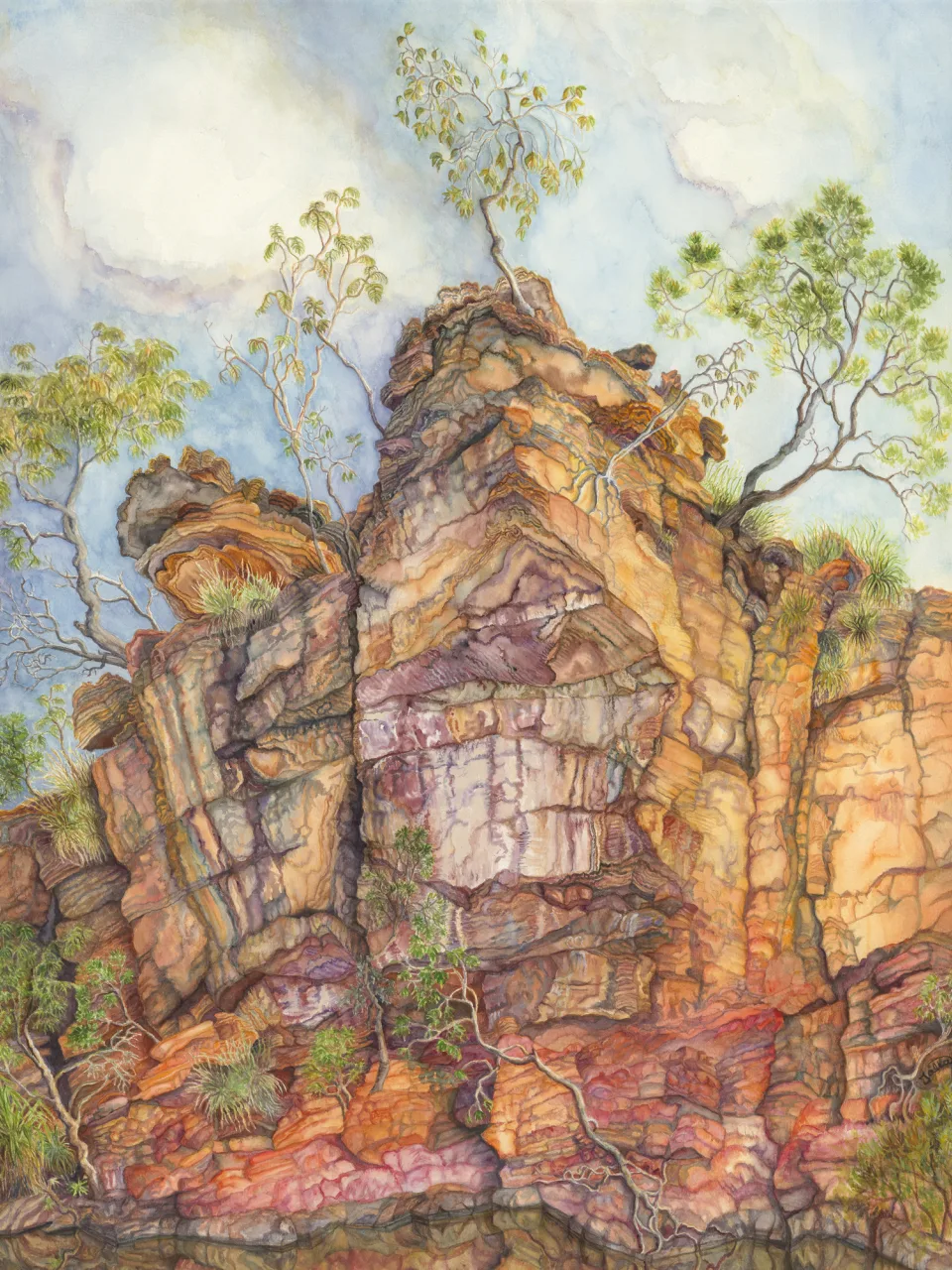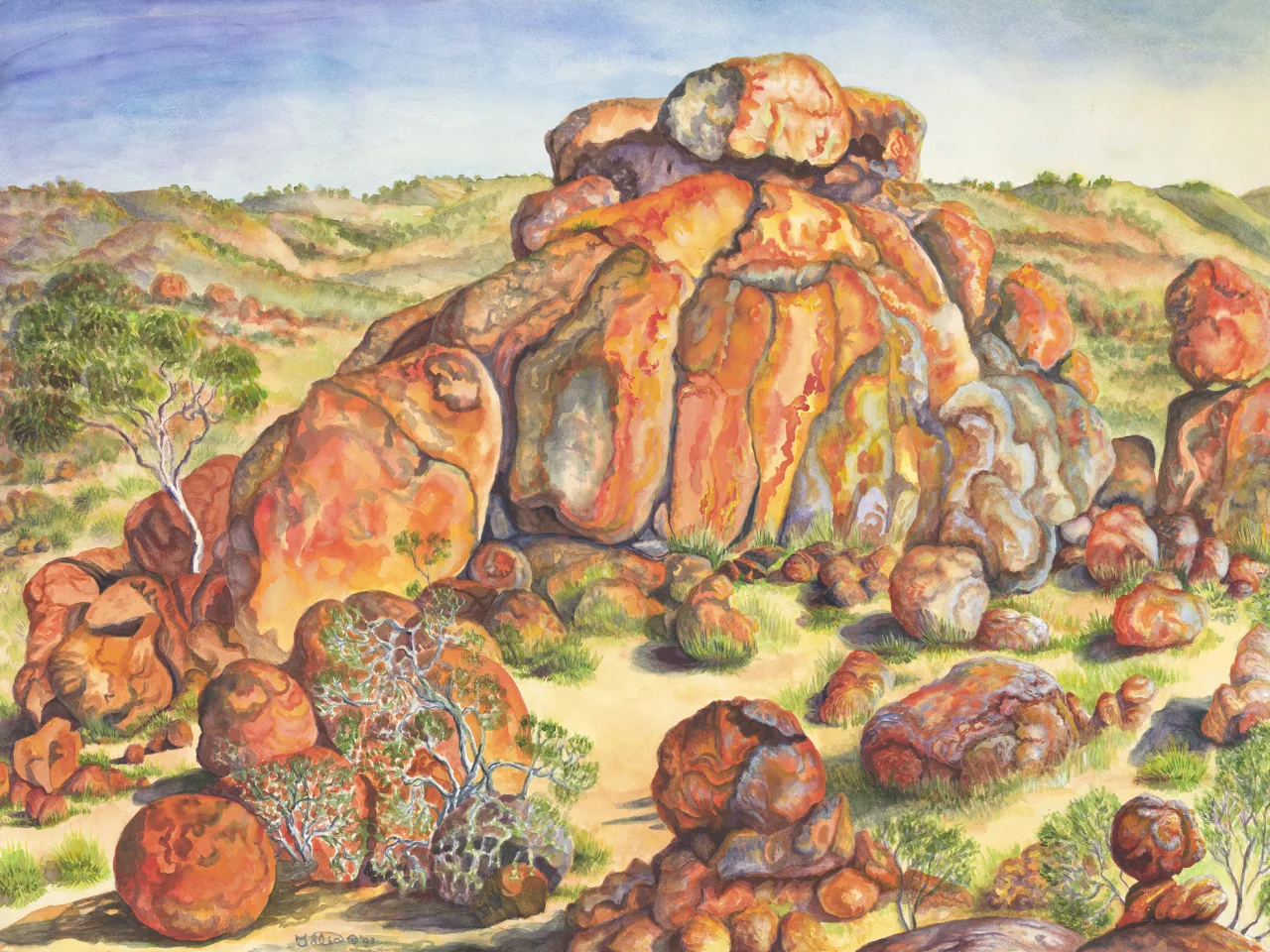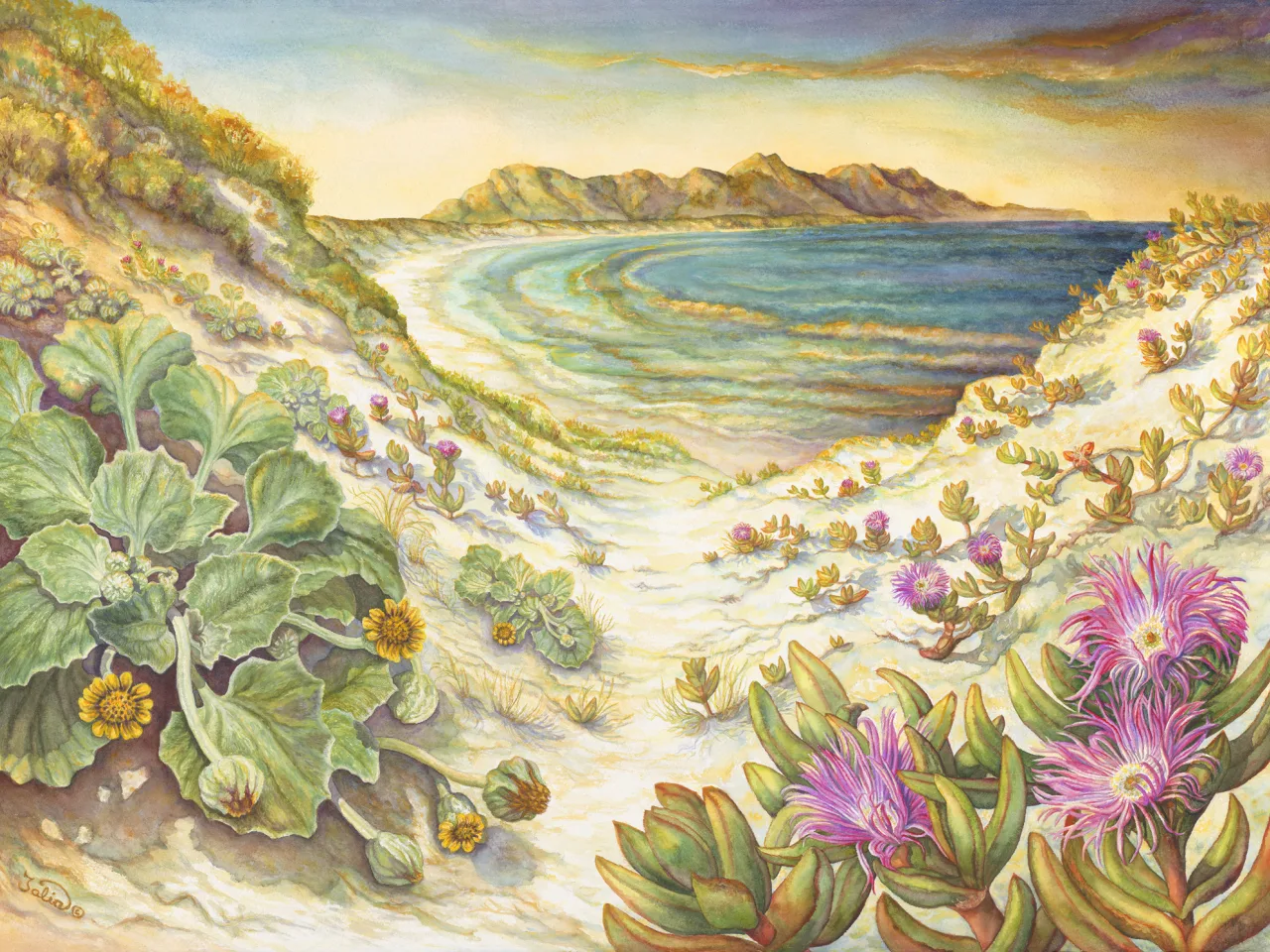Artwork 55 Ellery Quintet: A Year in the Life of a Desert Oasis. I—Ellery in Flood
Section 30
A Year in the Life of a Desert Oasis—Ellery Quintet
Ellery Creek, Tjorita / West MacDonnell National Park, Northern Territory
- 1. Capparis spinosa var. nummularia (wild passionfruit)
- 2. Eucalyptus camaldulensis (river red gum)
- 3. Petalostylis cassioides (butterfly bush)
Artwork 55
Buy a print
Limited edition giclee archival quality print on 310 gsm Ilford cotton rag (from an original work in watermedia on watercolour board, 102 cm high x 76 cm wide)
from the artist
We visited Ellery Creek Big Hole and its surrounds numerous times over the years. A Year in the Life of a Desert Oasis is a set of five works—a quintet—that follows the seasonal cycles of Ellery, from flood to drought and fire, and new life after rain, on the ridges and in the creek bed.
In this work, floodwaters reflect images of twisted river red gums, magnificent survivors of many such floods. As the waters receded, other grand survivors appeared, rapidly displaying new growth. On the right is “wild passionfruit” (Capparis spinosa var. nummularia) and on the left “butterfly bush” (Petalostylis cassioides). Most floods occur in the summer months, and these are summer flowering plants, which seem to thrive especially after rain and floods.
Wild passionfruit belongs to the Capparaceae family. Australia has about 18 species (Toelken, 1983/1988, pp. 100–102). Capers have a Gondwanan distribution pattern and fossils first appeared in the Late Cretaceous about 93 mya (Kenrick & Davis, 2004, pp. 202–203). The large, beautiful flowers are striking aesthetically, but difficult to paint on location. They flower at night, and rising early was essential, as the heat of the day withered the flowers by 10 a.m.. Freshly opened flowers are white, but as the morning progresses, they turn pink, gradually darkening until they finally collapse in a tangle of pink-purple petals and stamens over the four green sepals. Additionally, the whole bush can be decimated by white caper butterfly caterpillars, stripping the leaves. Although the bush can recover, an artist—however speedily working—cannot compete with ravenous caterpillars!
The butterfly bush flowers in the left foreground are more resilient in the heat. This lovely shrub is widespread in the dry inland, with three recognised species, all endemic to Australia (Latz, 1995/1996, pp. 264–266).
In geological time there have been many spectacular events and changes, especially over the last 800–760 million years, which is the estimated age of the Bitter Springs Formation. Massive earth movements have tilted, buckled, and folded many of these ridges, and other formations wander over the distant slopes in rows. Now ornamented by spinifex, acacias, and many other arid zone plants such as cassias and solanum, look closely and you will find fossilised stromatolites, from when shallow seas covered most of the vast flat desert area of Central Australia (Thompson, 1995, p. 68; van Oosterzee, 1991, p. 14).
